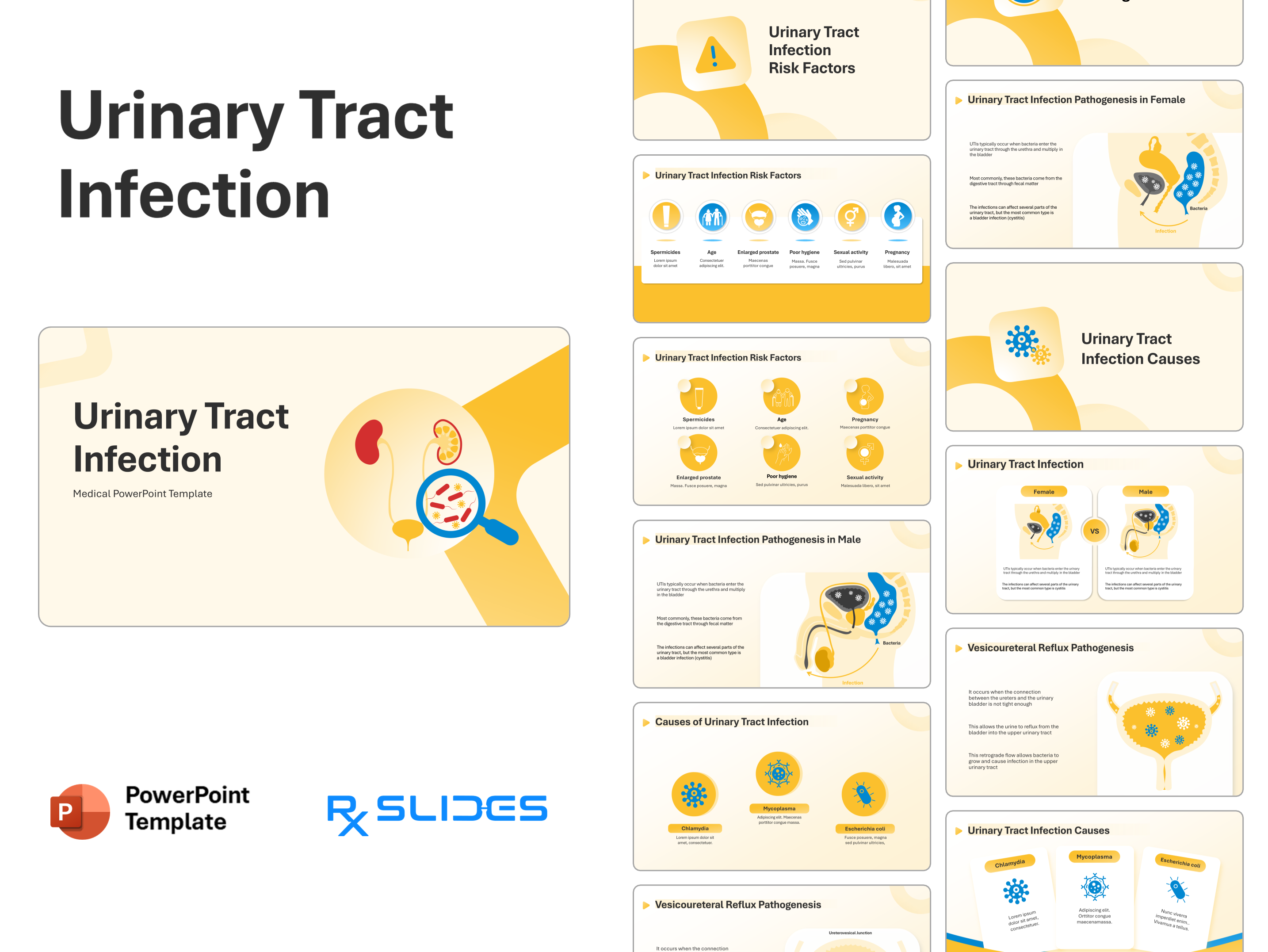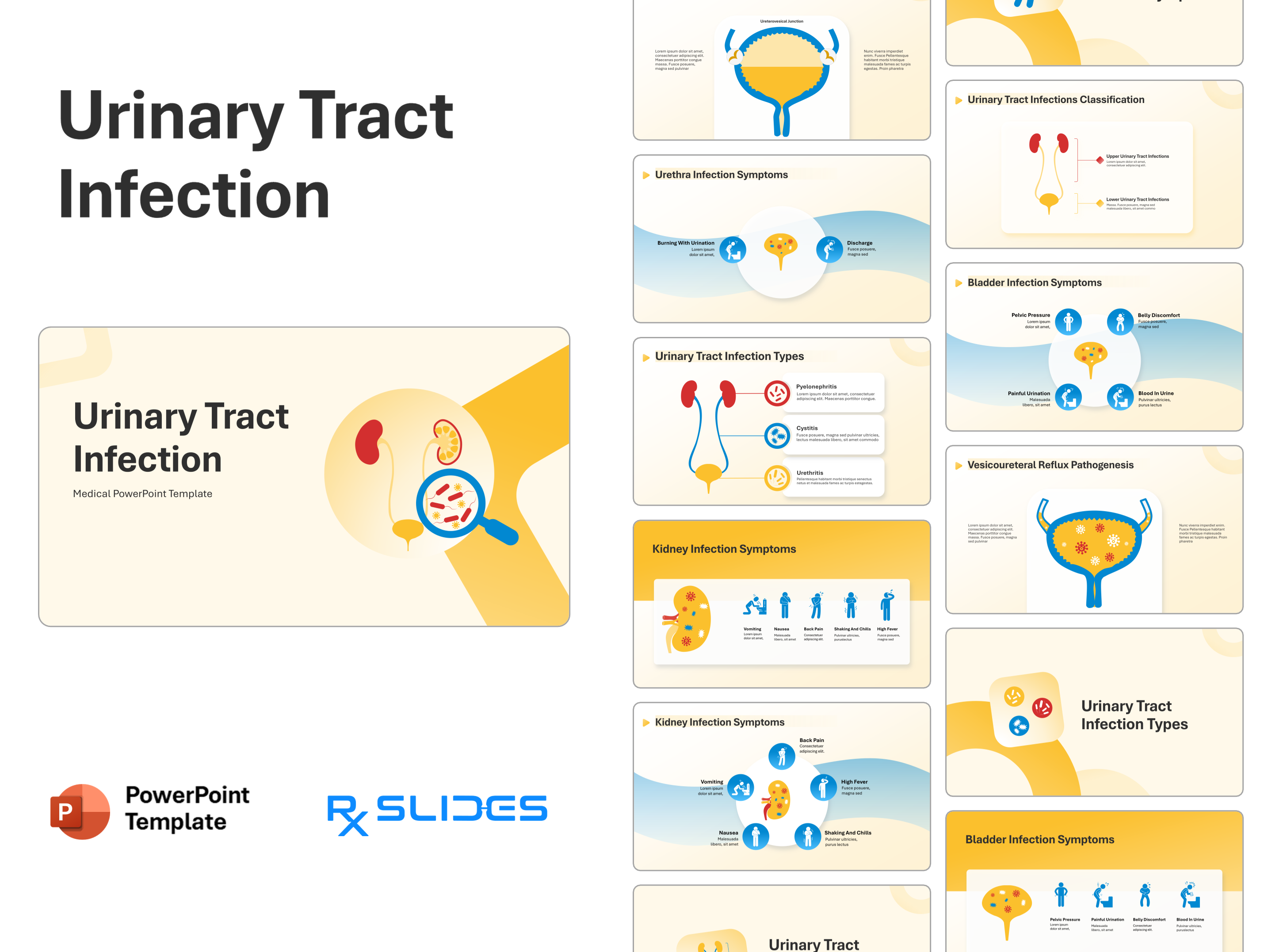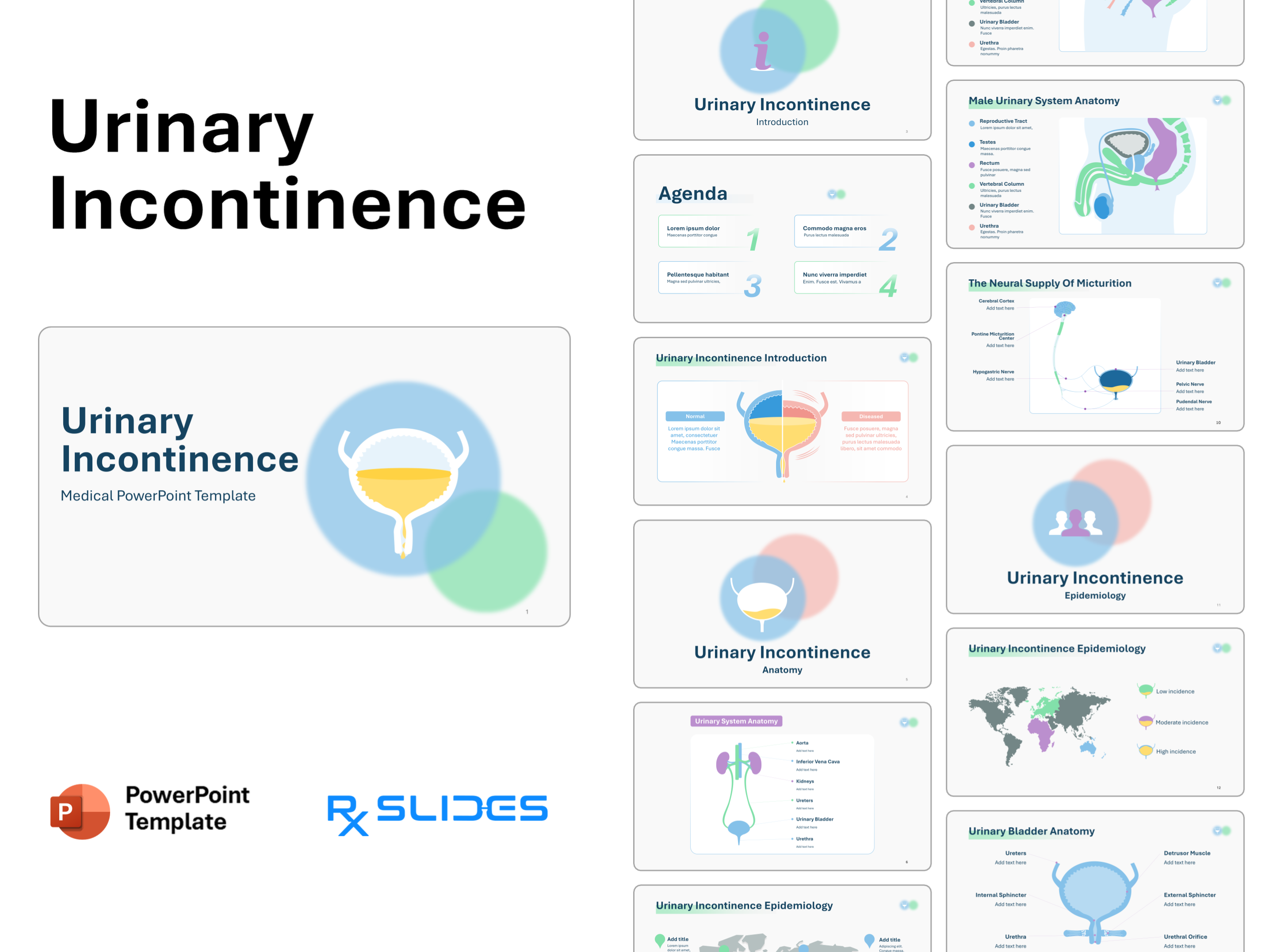Urinary Tract Infection PowerPoint Template
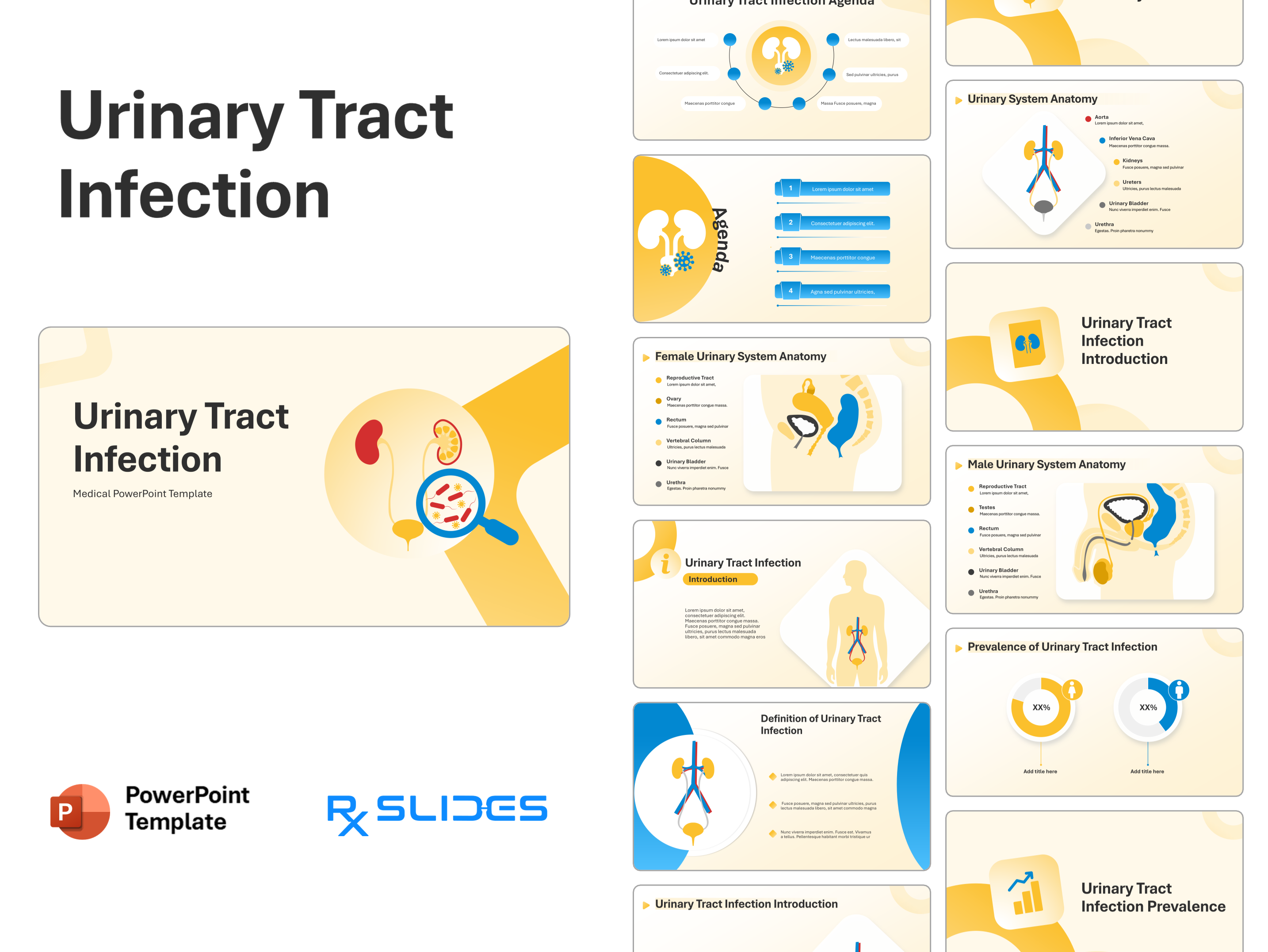
UTI PowerPoint Template
This Urinary Tract Infection (UTI) PowerPoint Template is the complete solution for medical educators, nursing school instructors, and clinical presenters who need to deliver high-quality, professional lectures on the most common genitourinary condition.
Stop wasting time designing slides from scratch. This comprehensive kit features 49 unique, editable slides that cover the entire scope of UTIs, structured for clarity and engagement.
Key Features & Content Value
• 100% Editable & Compatible: Every element from icons and charts to text is fully customizable to match your brand or lecture style. Works seamlessly across both PowerPoint and Google Slides.
• Complete Coverage: Includes detailed sections on Anatomy, Etiology (microbial causes), and Pathogenesis, featuring specific breakdowns of the ascending pathway and Vesicoureteral Reflux (VUR).
• Clinical Differentiation: Dedicated slides clearly define and contrast Upper UTI (Pyelonephritis) and Lower UTI (Cystitis) symptoms, diagnosis, and treatment.
• Logical Flow: Features unique Section Dividers and Alternate Layouts to easily structure your presentation from Definition and Risk Factors through Treatment and Prevention.
Slide 1: UTI PowerPoint Template – Intro Slide

- Clean, professional title slide introducing the Urinary Tract Infection (UTI) presentation.
- Medical-themed background for a strong visual impact.
Slide 2: Agenda
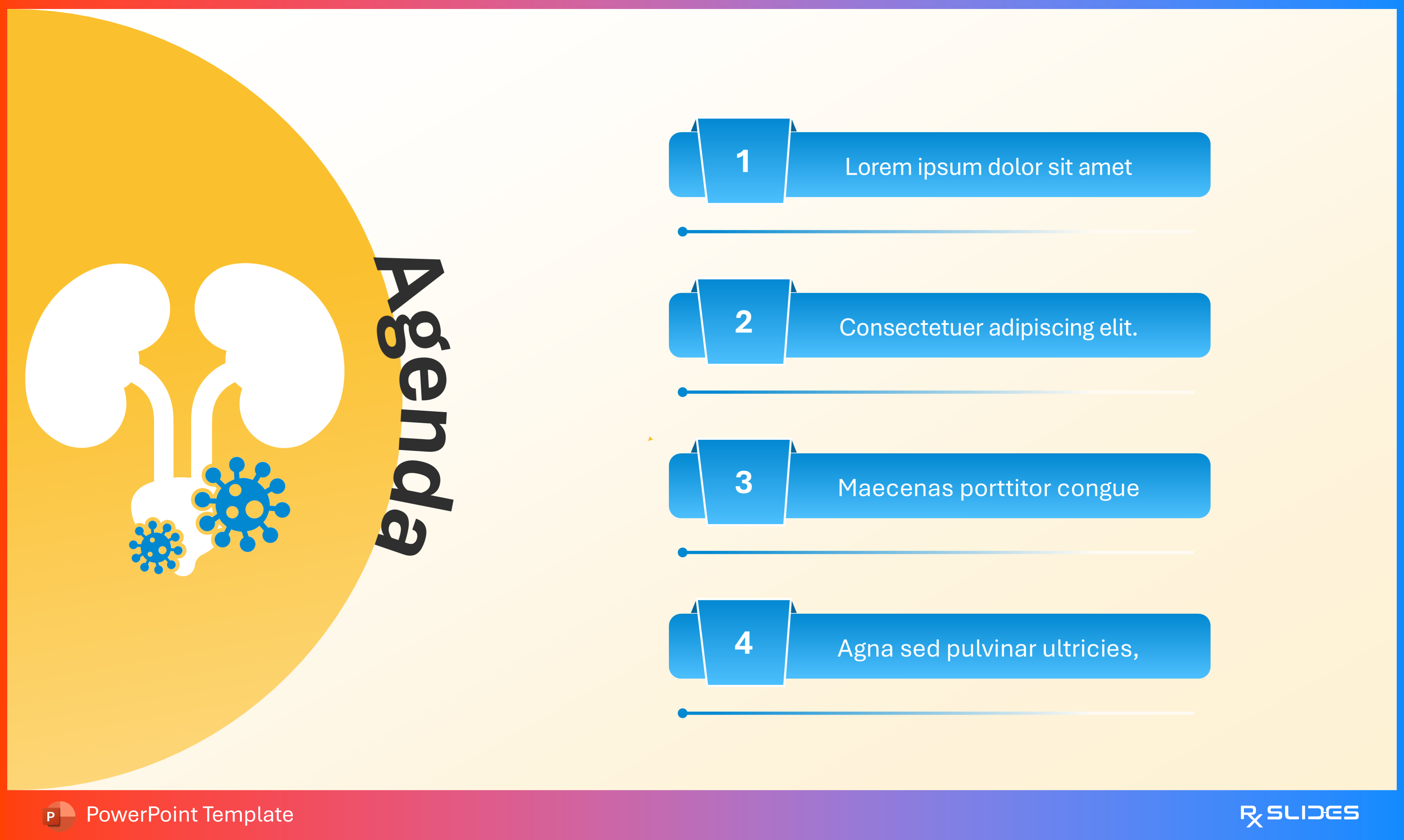
- Outlines main sections of the UTI PowerPoint presentation: definition, anatomy, causes, pathogenesis, symptoms, diagnosis, treatment, and prevention.
- Minimalist design ensures clarity and smooth readability.
Slide 3: Topics Overview
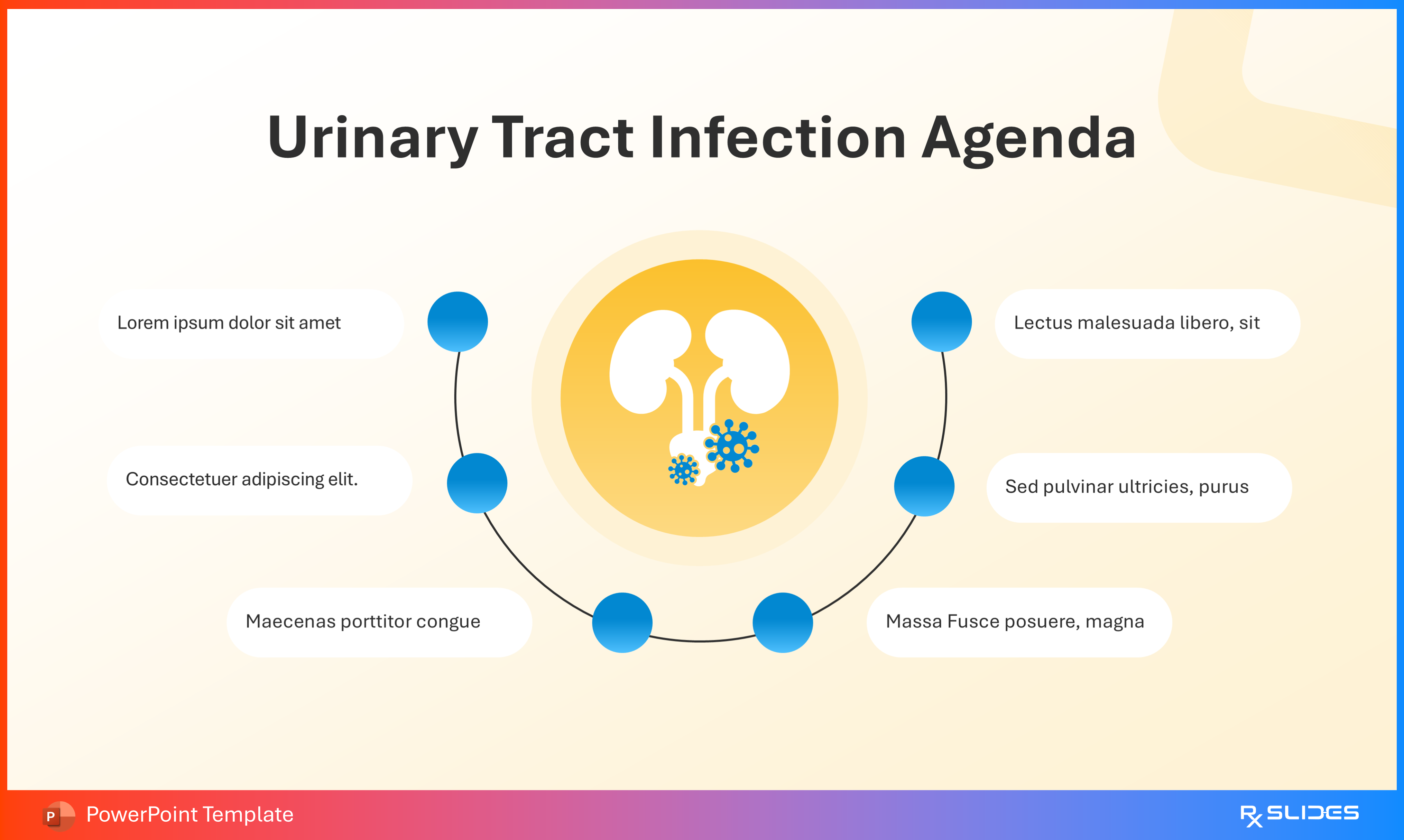
- Highlights key sections to be covered next in the UTI slides.
- Provides a clear roadmap for audience engagement.
Slide 4: Definition Slide for UTI

- Balanced layout for concise explanation of UTI definition.
Slide 5: Introduction Slide – Urinary System Infographics
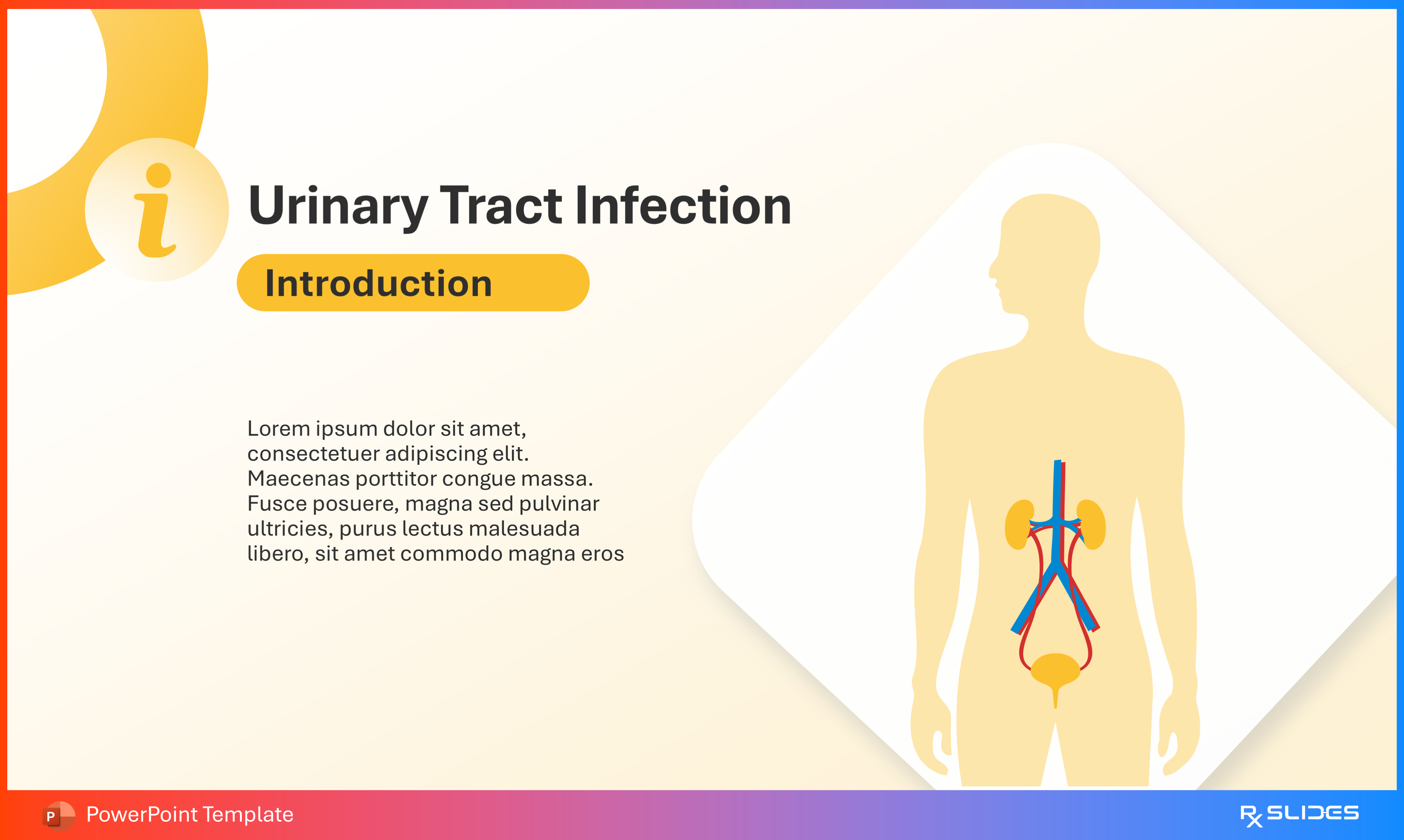
- Modern infographics clarify relationships and the function of urinary organs.
- Editable vectors allow highlighting key structures.
Slide 6: Alternate Layout for Definition
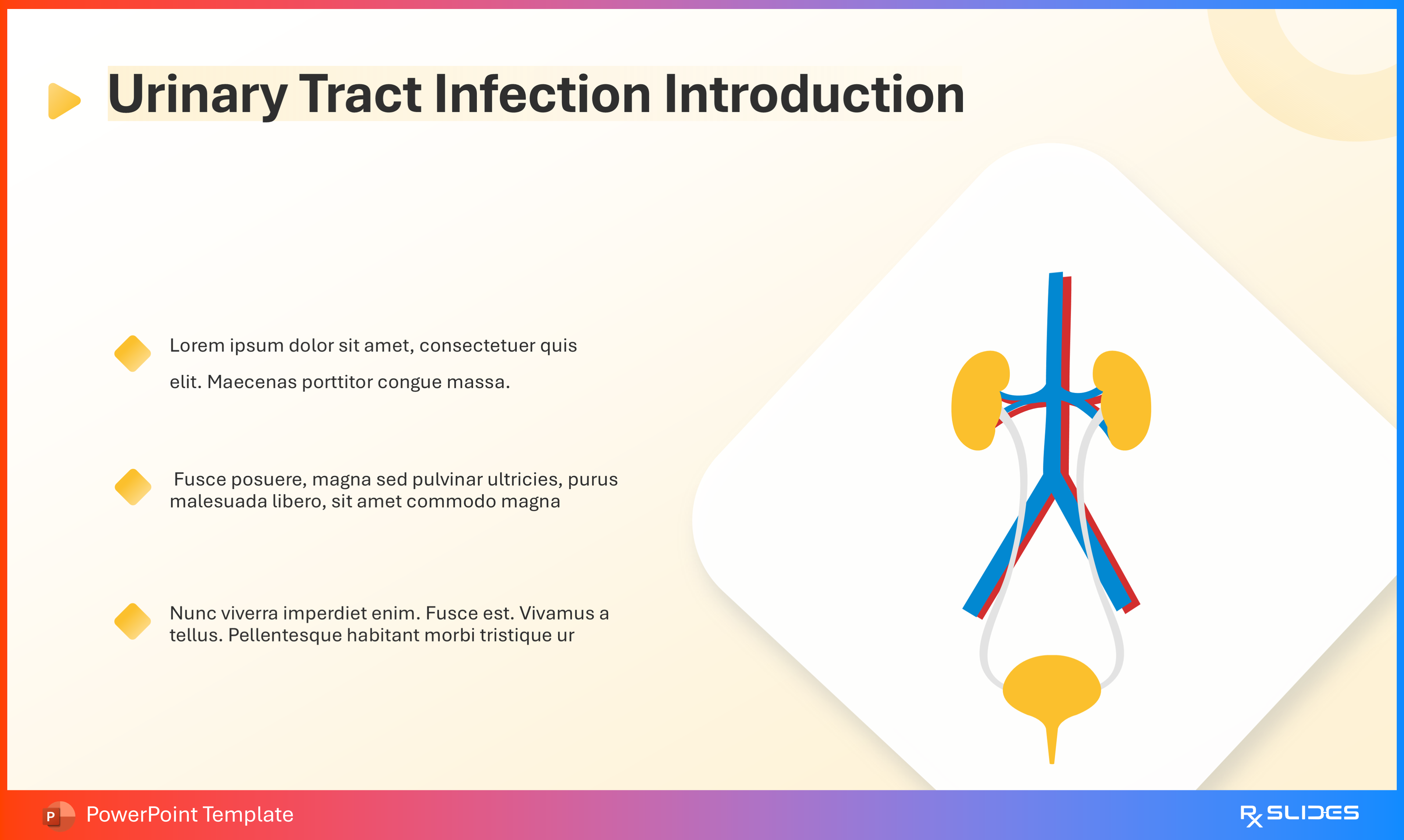
- Ideal for explaining UTI pathophysiology and gender-based differences.
Slide 7: Introductory Design Variation
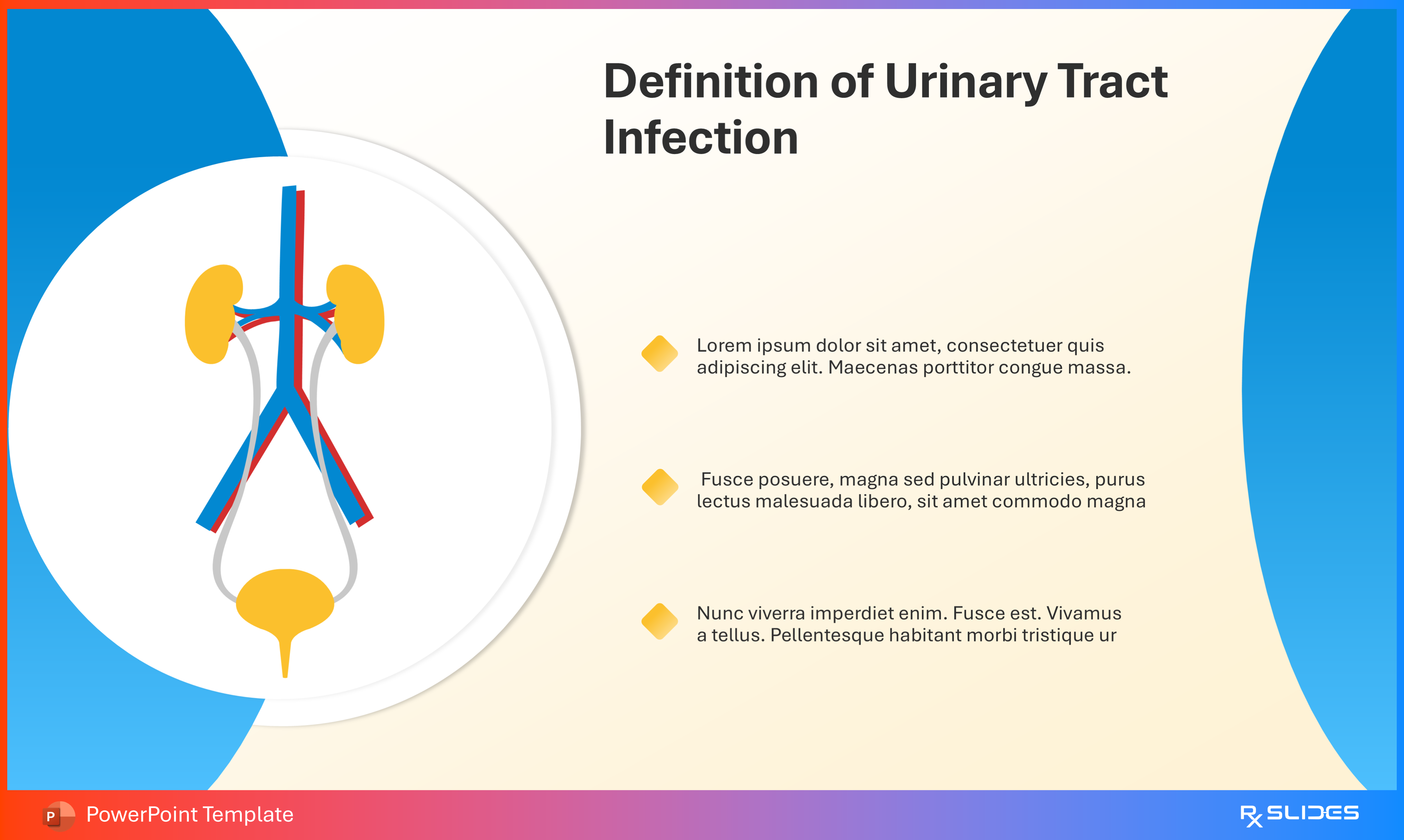
- Concise summary of UTI disease overview.
Slide 8: Urinary System Anatomy – Section Divider

- Transition slide featuring a stylized urinary tract illustration.
Slide 9: Urinary System Anatomy Overview
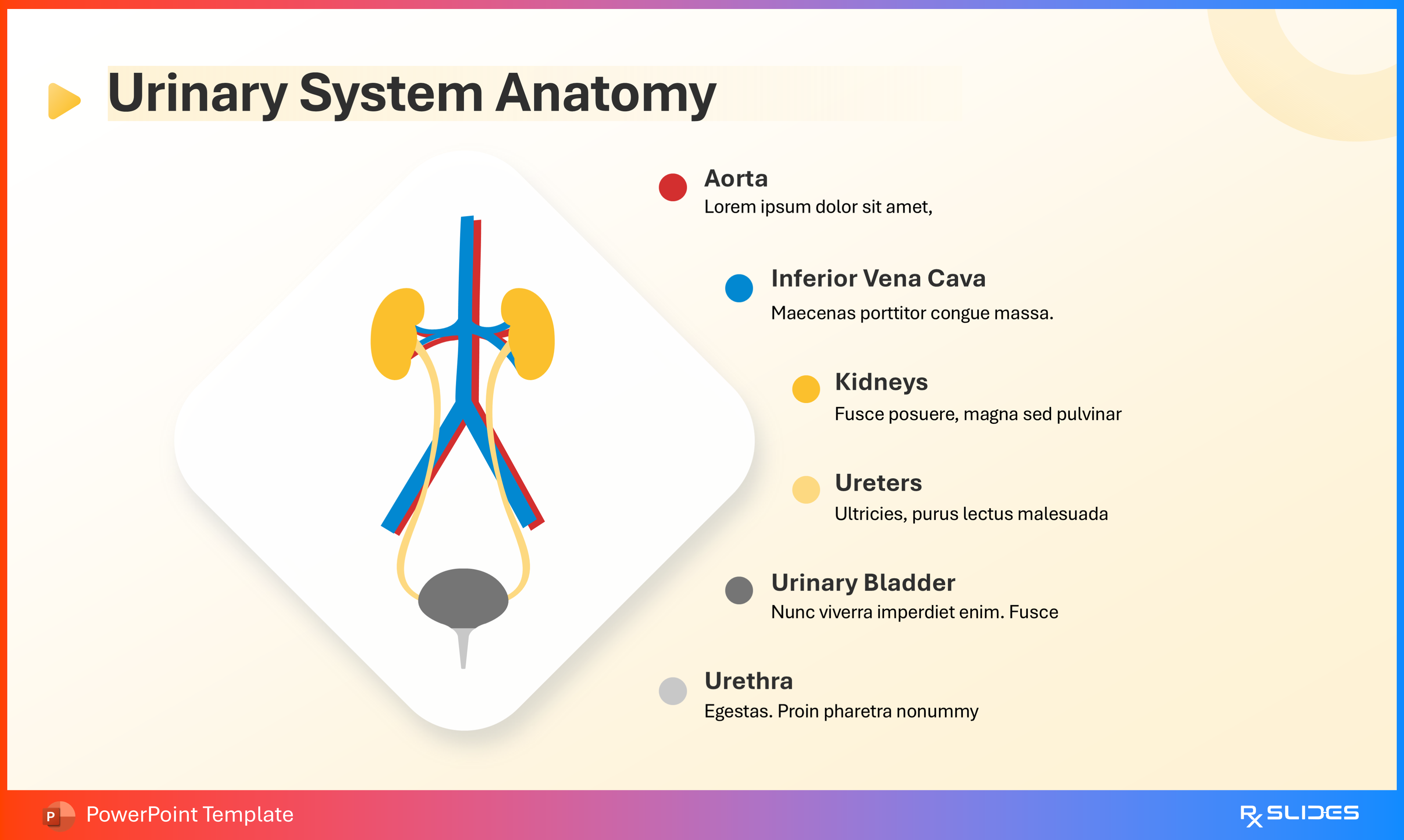
- Illustrates key organs: kidneys, ureters, bladder, and urethra.
- Supports smooth understanding of infection pathways.
Slide 10: Female Urinary System Anatomy
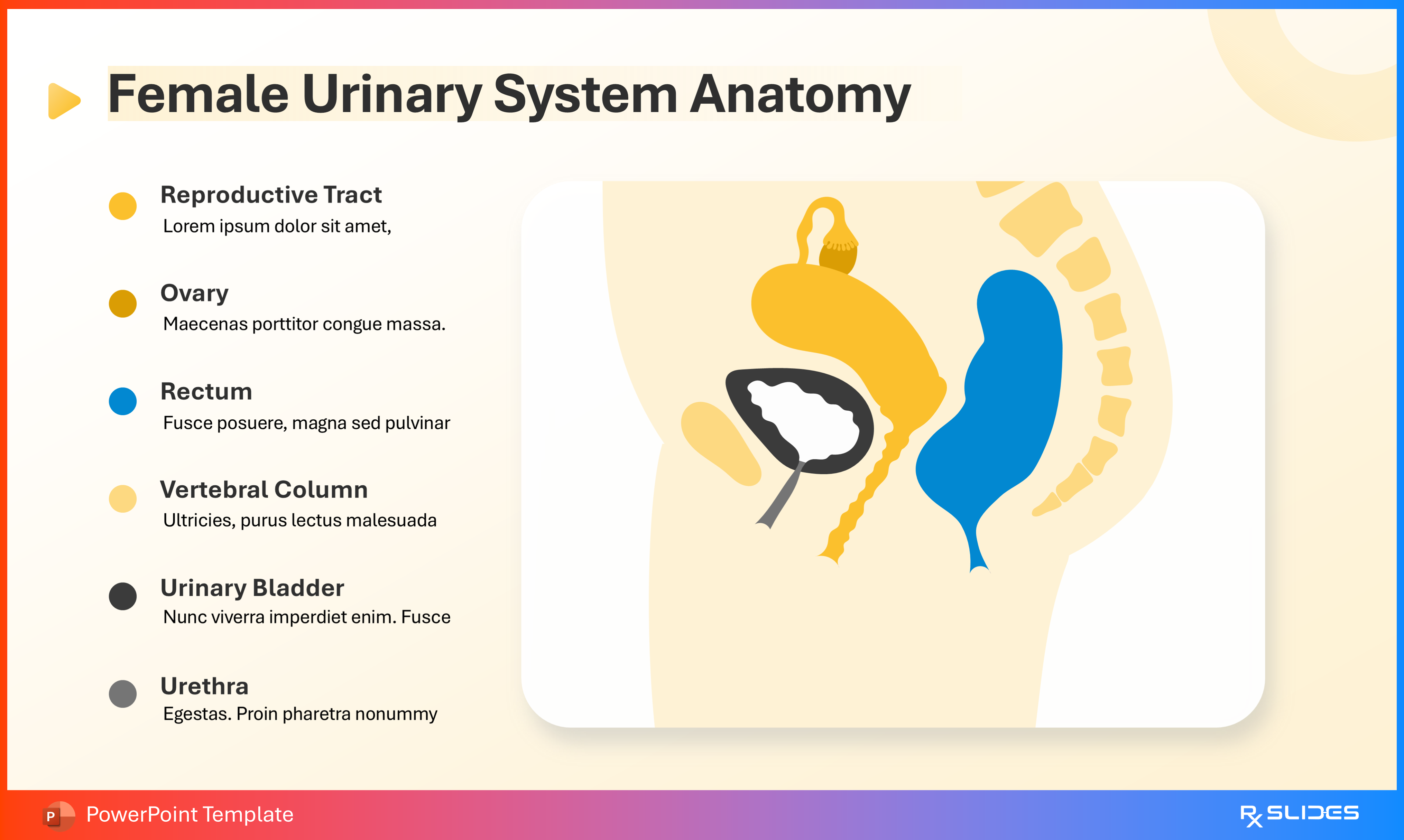
- Focuses on female urinary tract structure, highlighting UTI susceptibility.
Slide 11: Male Urinary System Anatomy
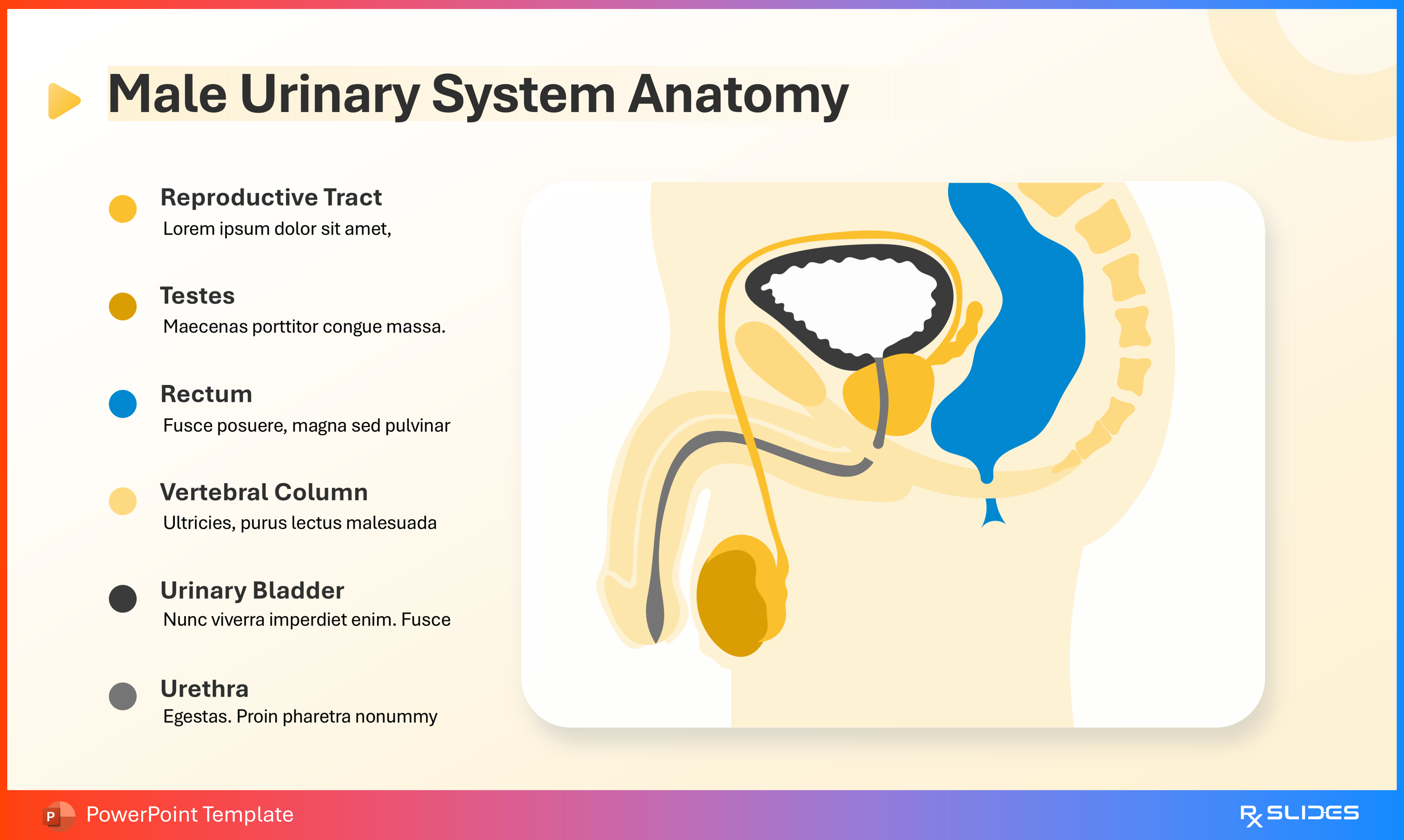
- Illustrates the male urinary tract, including the bladder, urethra, and prostate.
- Highlights gender-specific anatomical differences.
Slide 12: Urinary Tract Infection Prevalence – Section Divider

- Introduces epidemiology and prevalence data.
Slide 13: Prevalence Data Visualization
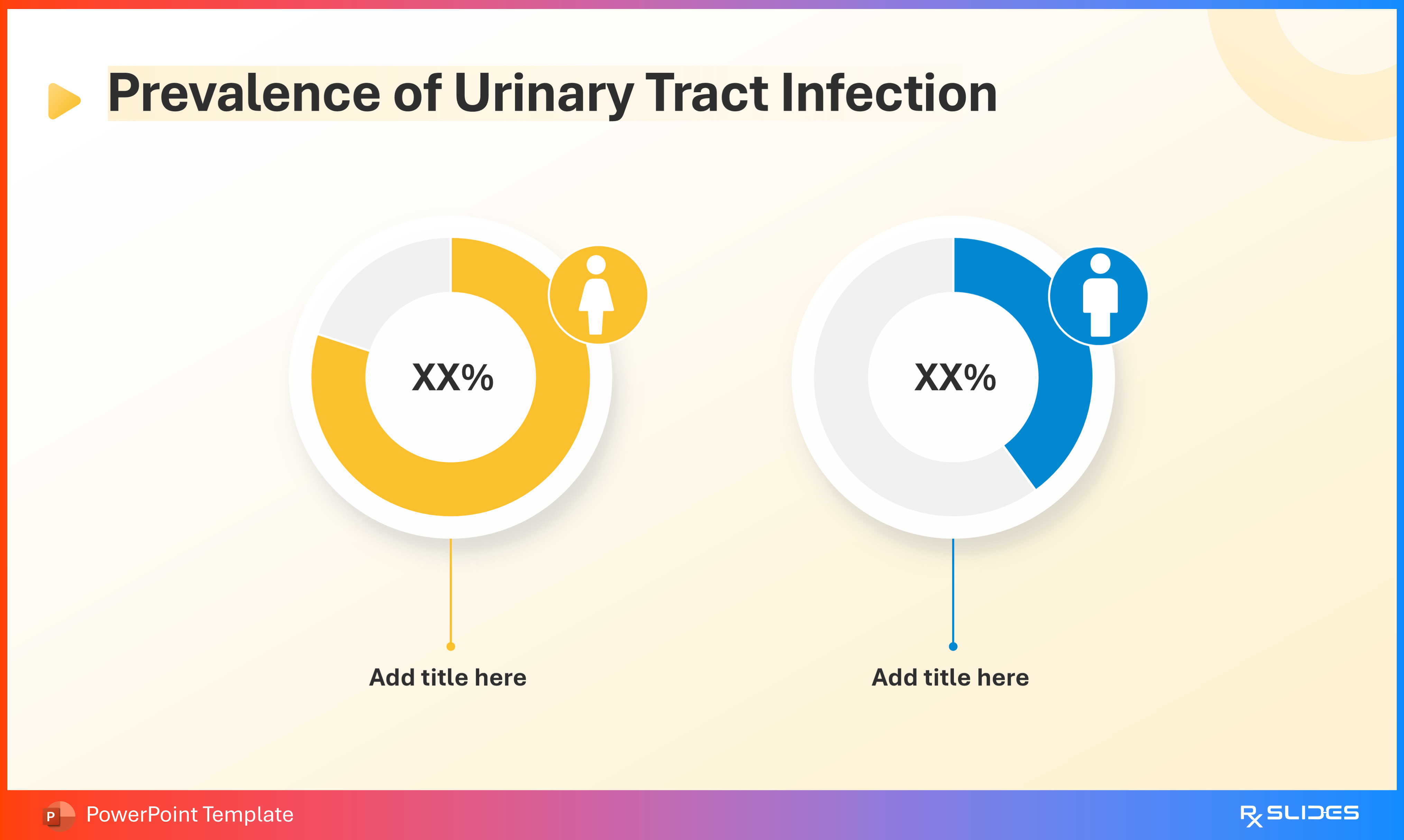
- Shows UTI incidence by age and gender.
- Includes icons and charts for clarity.
Slide 14: Urinary Tract Infection Risk Factors – Section Divider

- Segments the risk factors contributing to UTIs.
Slide 15: UTI Risk Factors
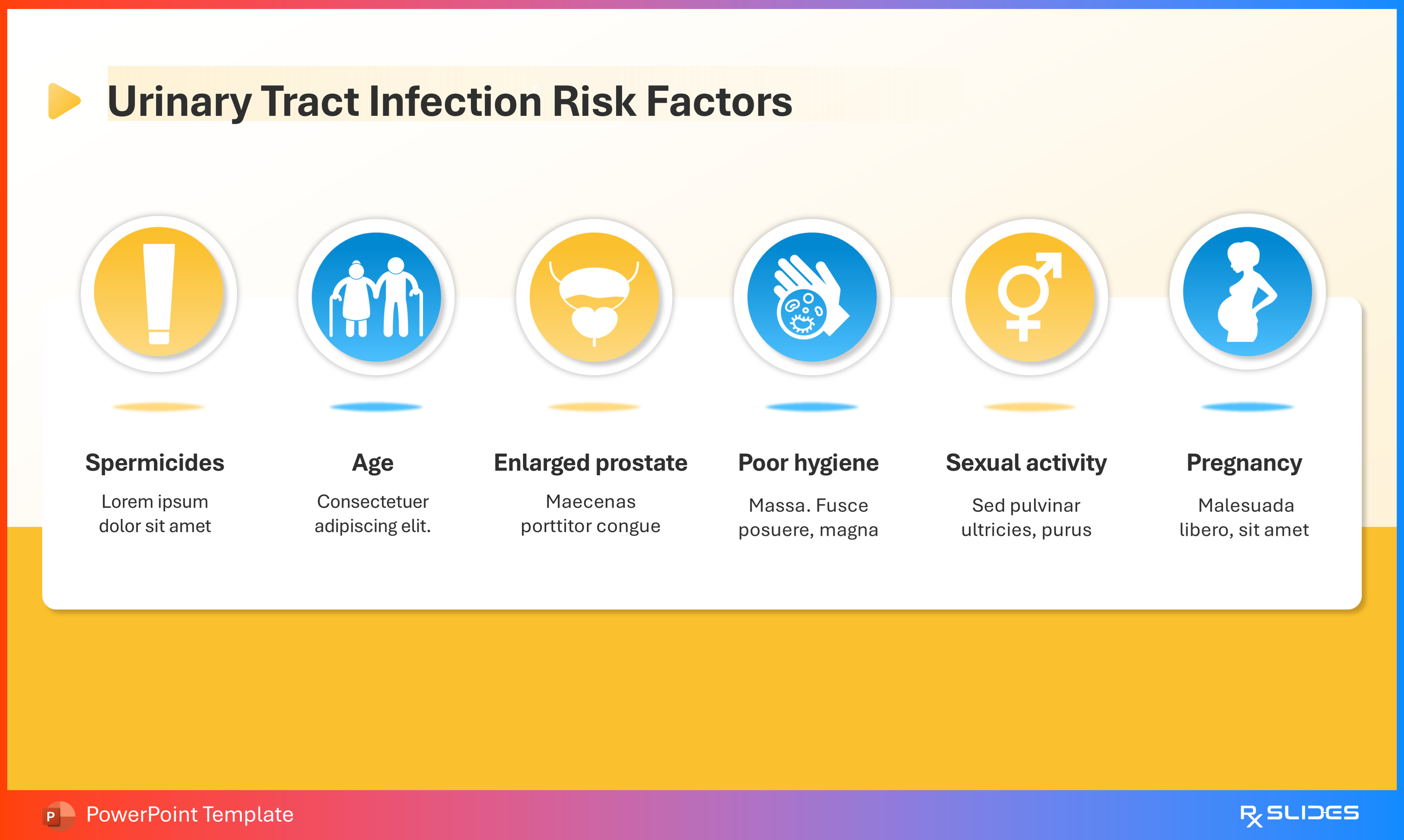
- Highlights main factors: spermicides, age, enlarged prostate, poor hygiene, sexual activity, and pregnancy.
- Uses clean medical icons and an organized layout.
Slide 16: UTI Risk Factors – Alternate Layout
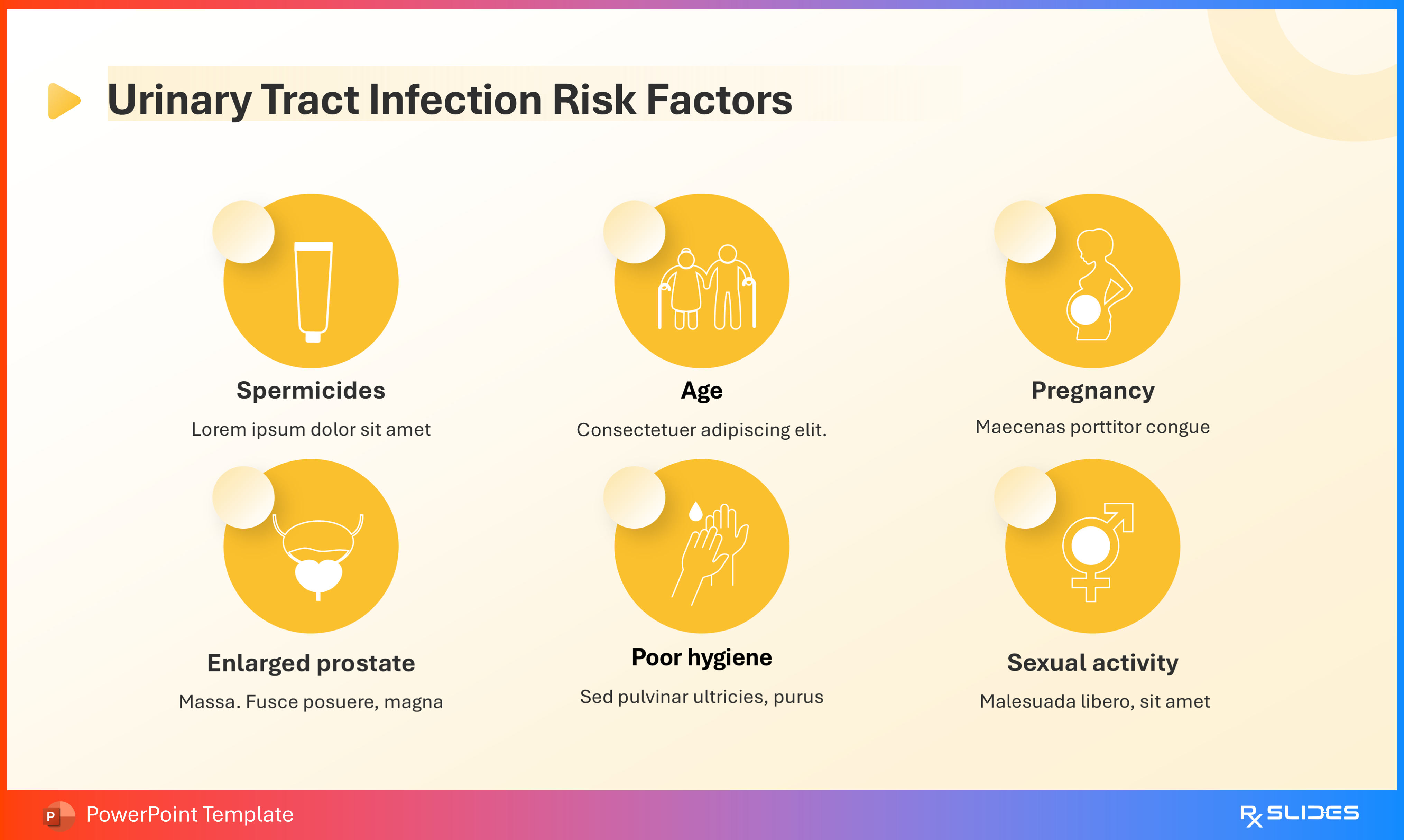
- Presents risk factors concisely with clean visuals.
Slide 17: Animated Slide for UTI Causes

- Introduces microbial and non-microbial causes of UTIs.
Slide 18: Bacterial Causes
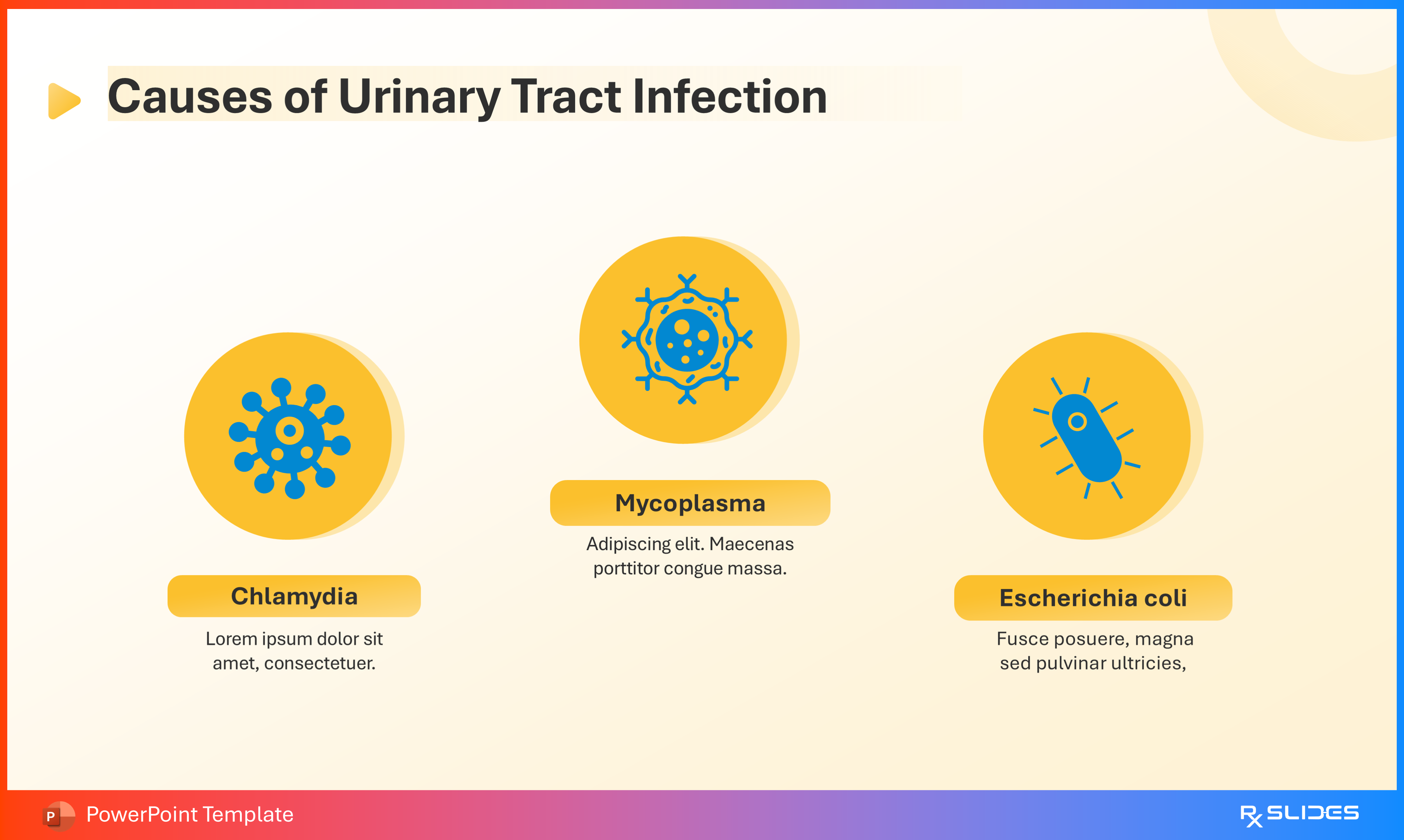
- Lists common pathogens: Escherichia coli, Chlamydia, and Mycoplasma.
Space available for clinical notes.
Slide 19: Alternate Layout for Pathogenic Causes
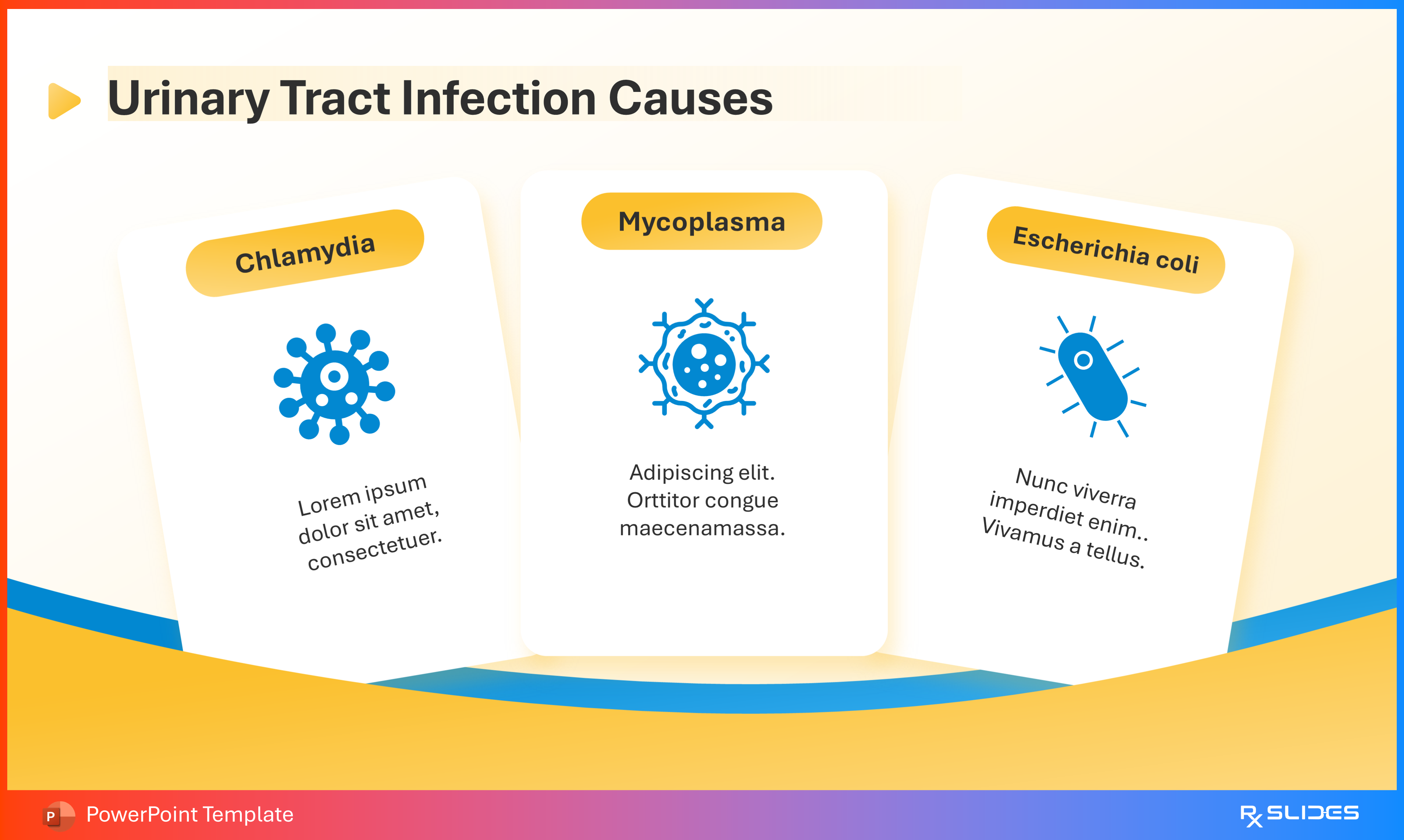
- Reinforces UTI causes visually with flexible design.
Slide 20: Urinary Tract Infection Pathogenesis – Section Header

- Introduces mechanics of infection development.
Slide 21: Pathogenesis in Female
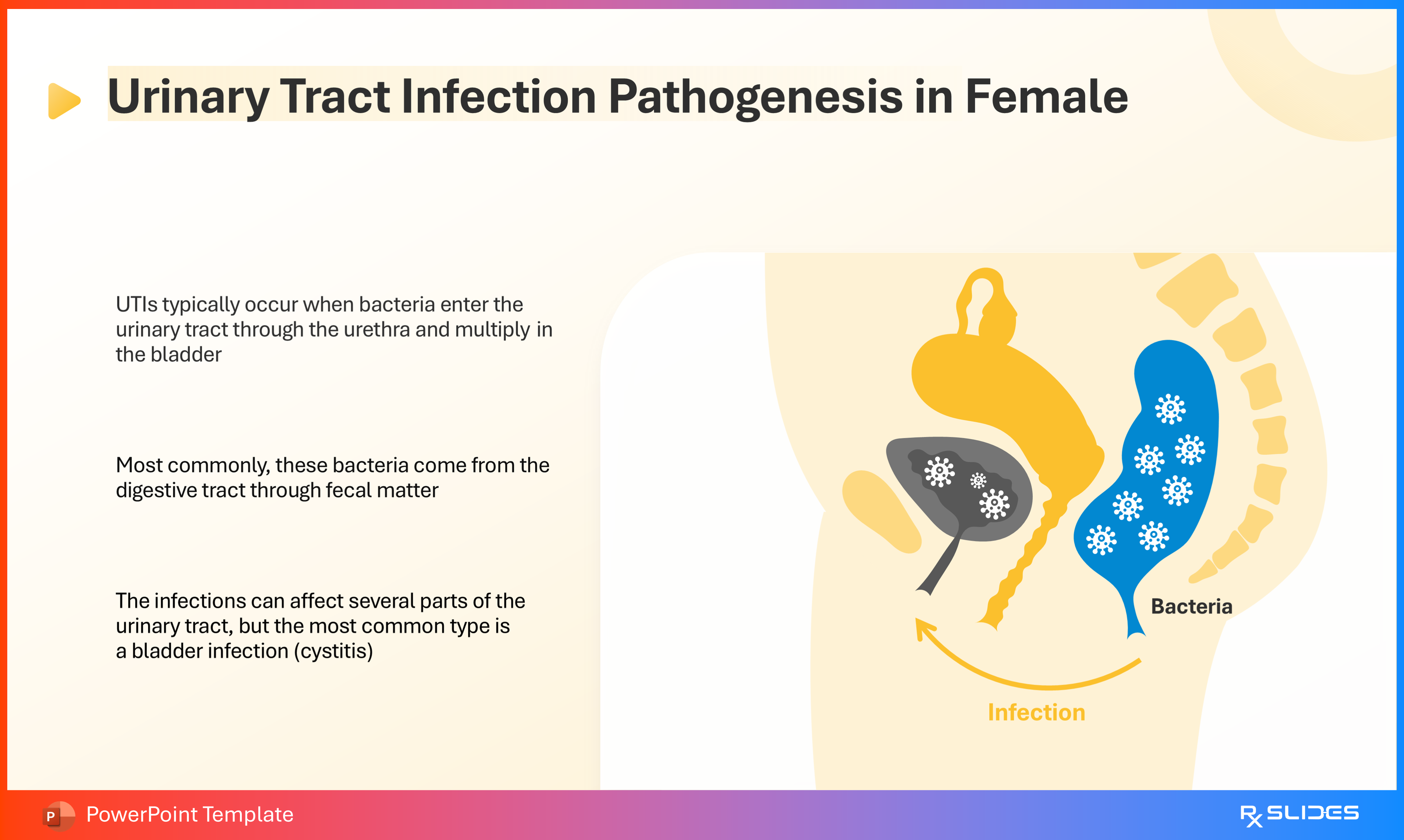
- Explains ascending infection pathway in females.
Highlights female anatomy and susceptibility with clear visuals.
Slide 22: Pathogenesis in Male
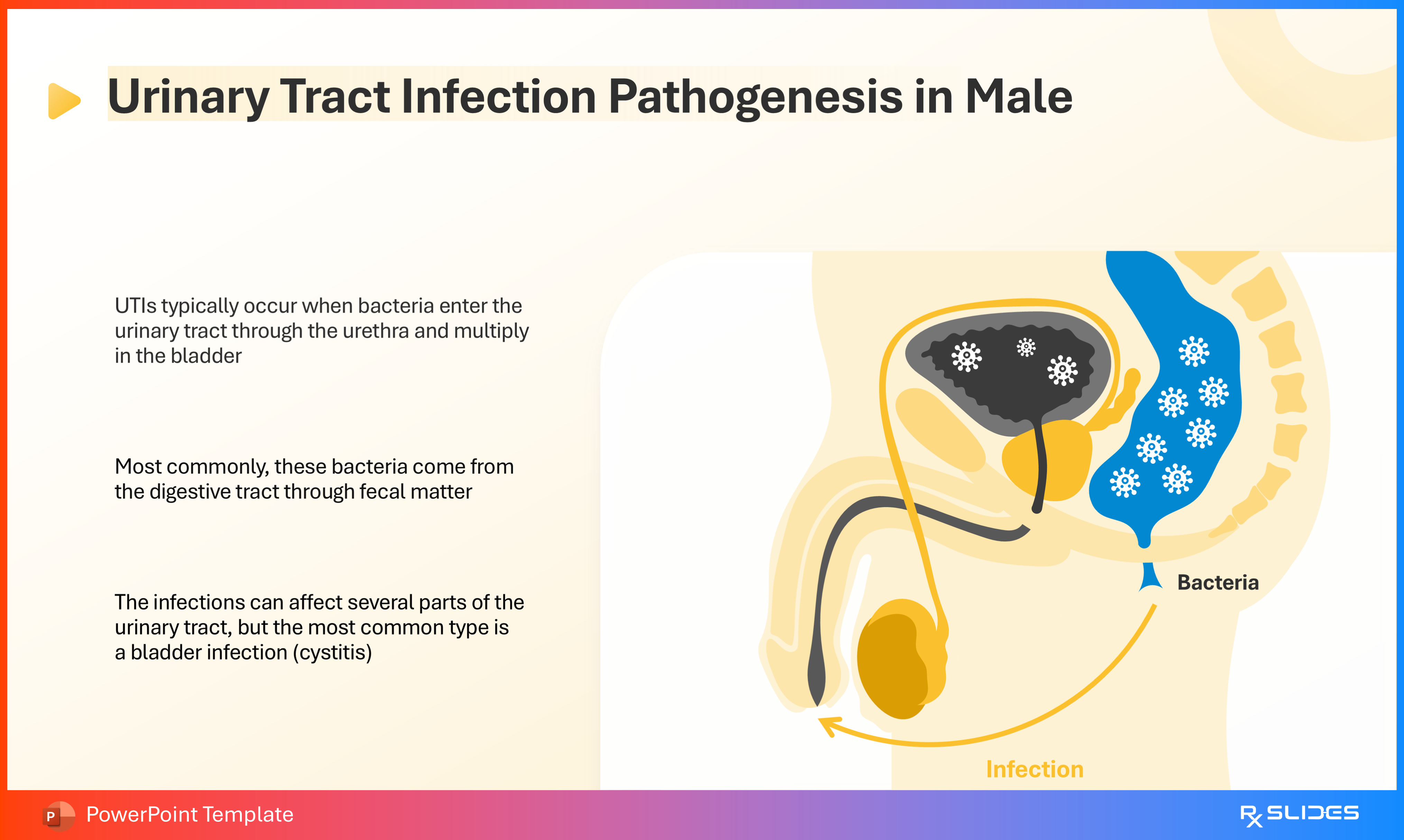
- Shows UTI development in males, emphasizing anatomical differences.
Slide 23: Pathogenesis—Female vs. Male Comparison
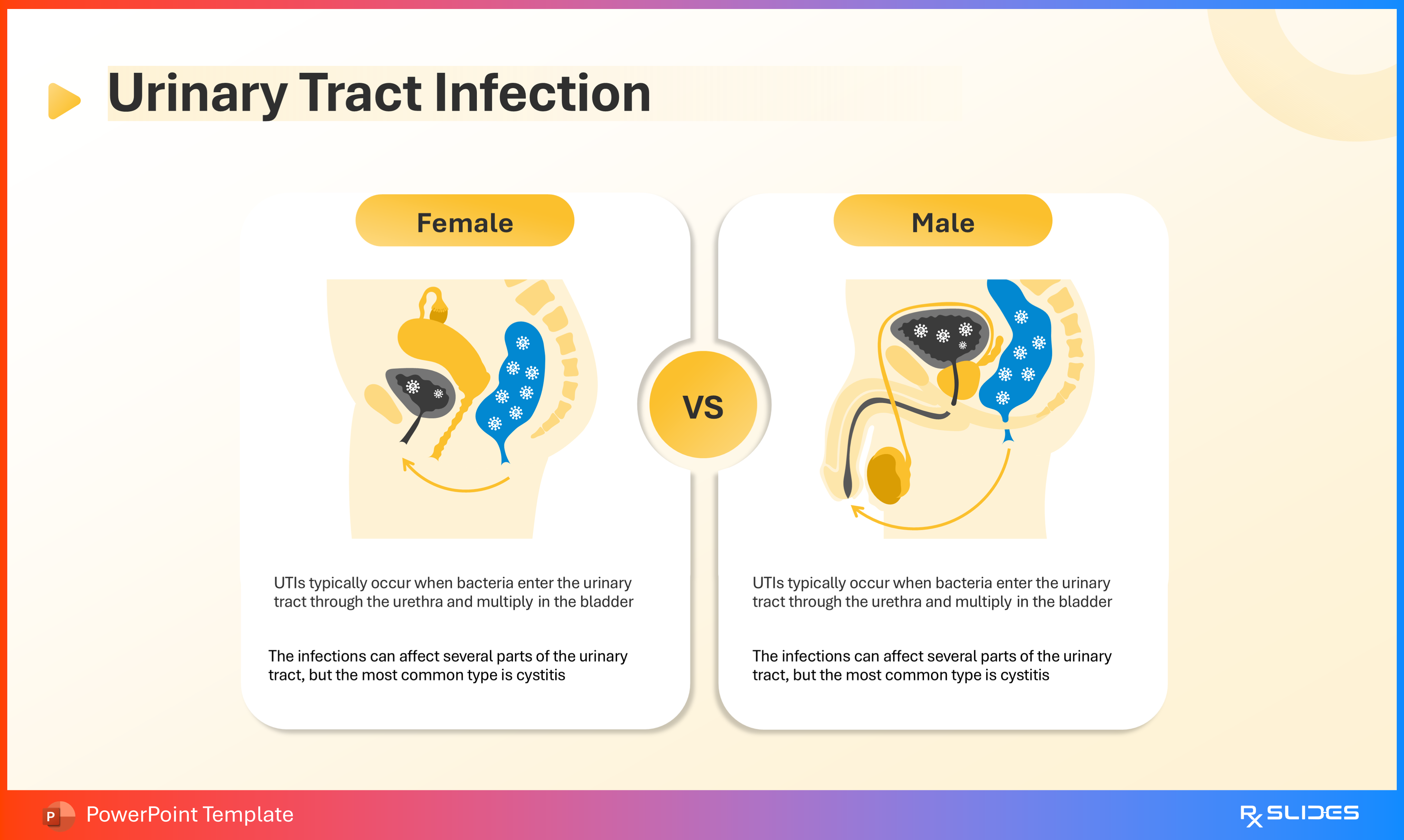
- Side-by-side visual comparison of UTI mechanisms in both genders.
Slide 24: Vesicoureteral Reflux Pathogenesis
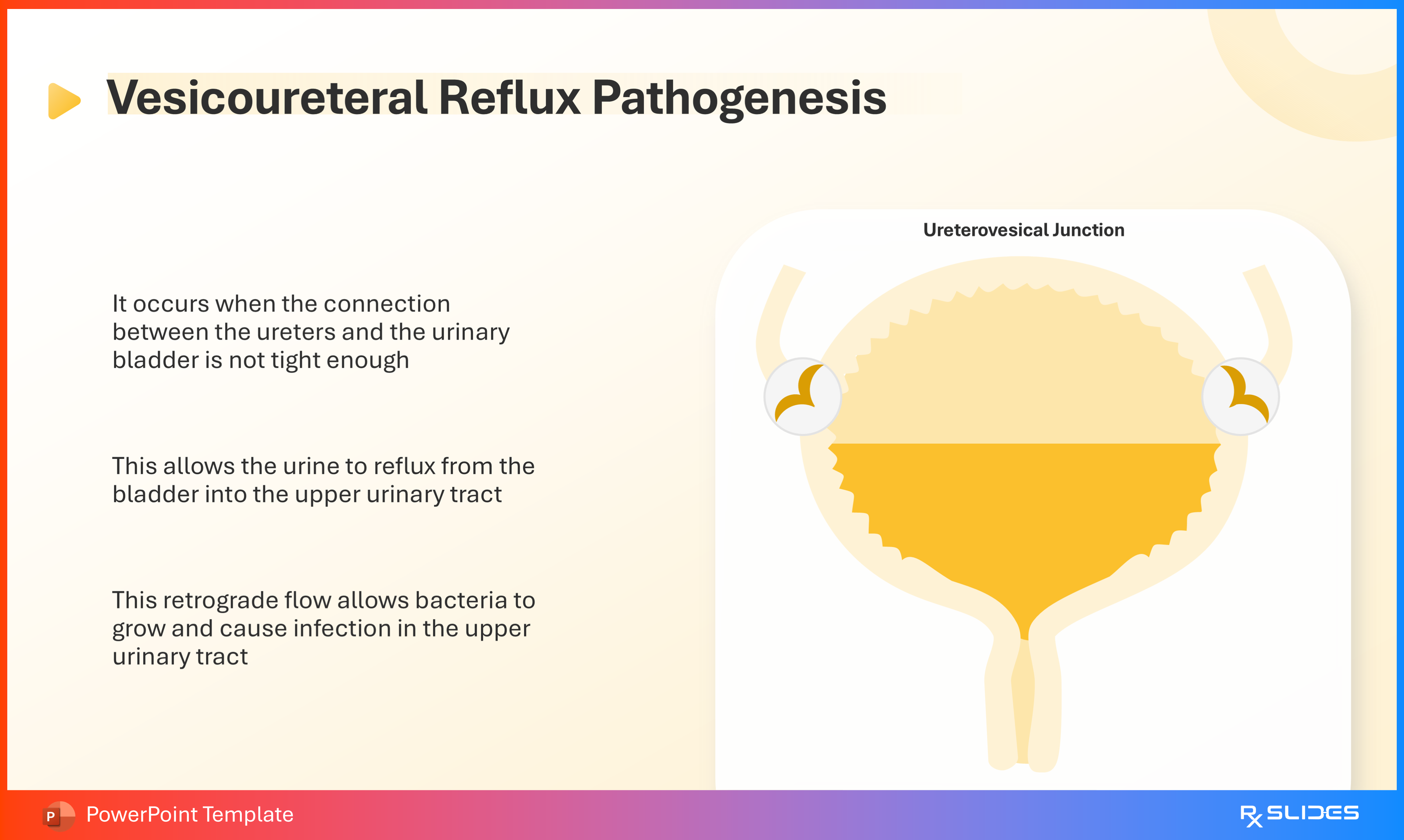
- Illustrates backward urine flow due to ureterovesical junction issues.
- Clear diagrams make kidney infection risk easy to understand.
Slide 25: Vesicoureteral Reflux – Alternate Layout
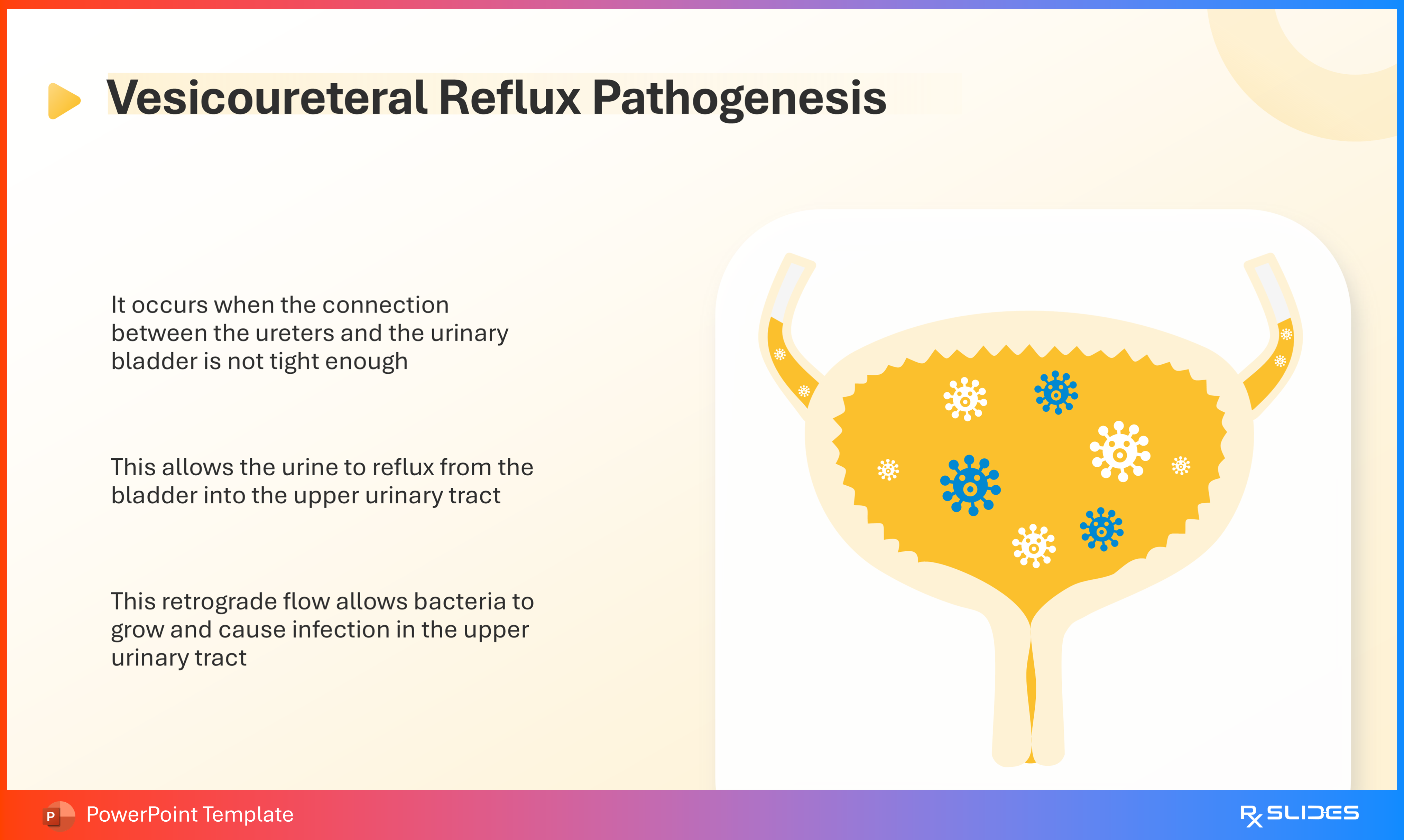
- Visual variation emphasizing the reflux mechanism.
Slide 26: Vesicoureteral Reflux – Animated Pathogenesis
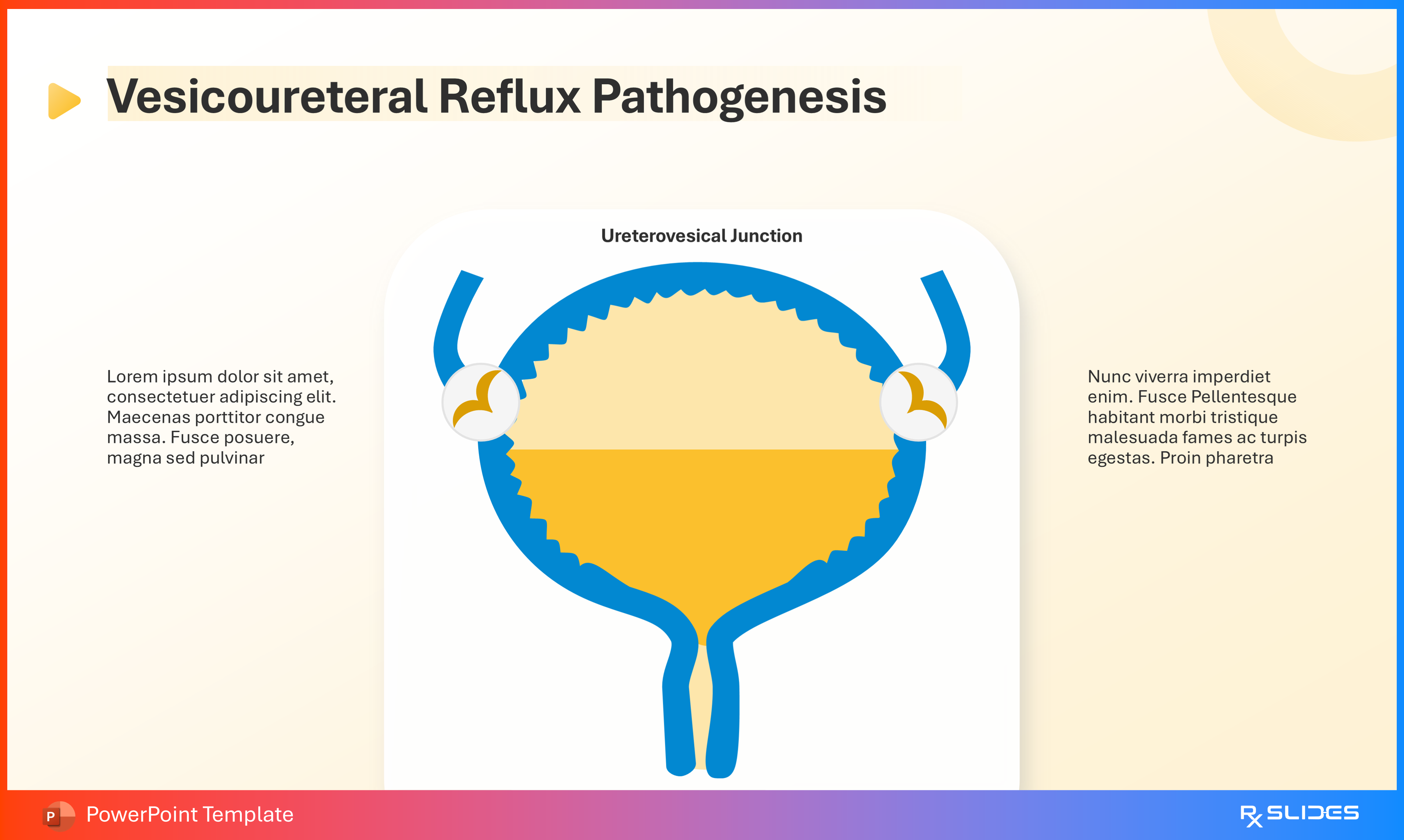
- Demonstrates retrograde urine flow and infection spread clearly.
Slide 27: Vesicoureteral Reflux – Pathogenesis
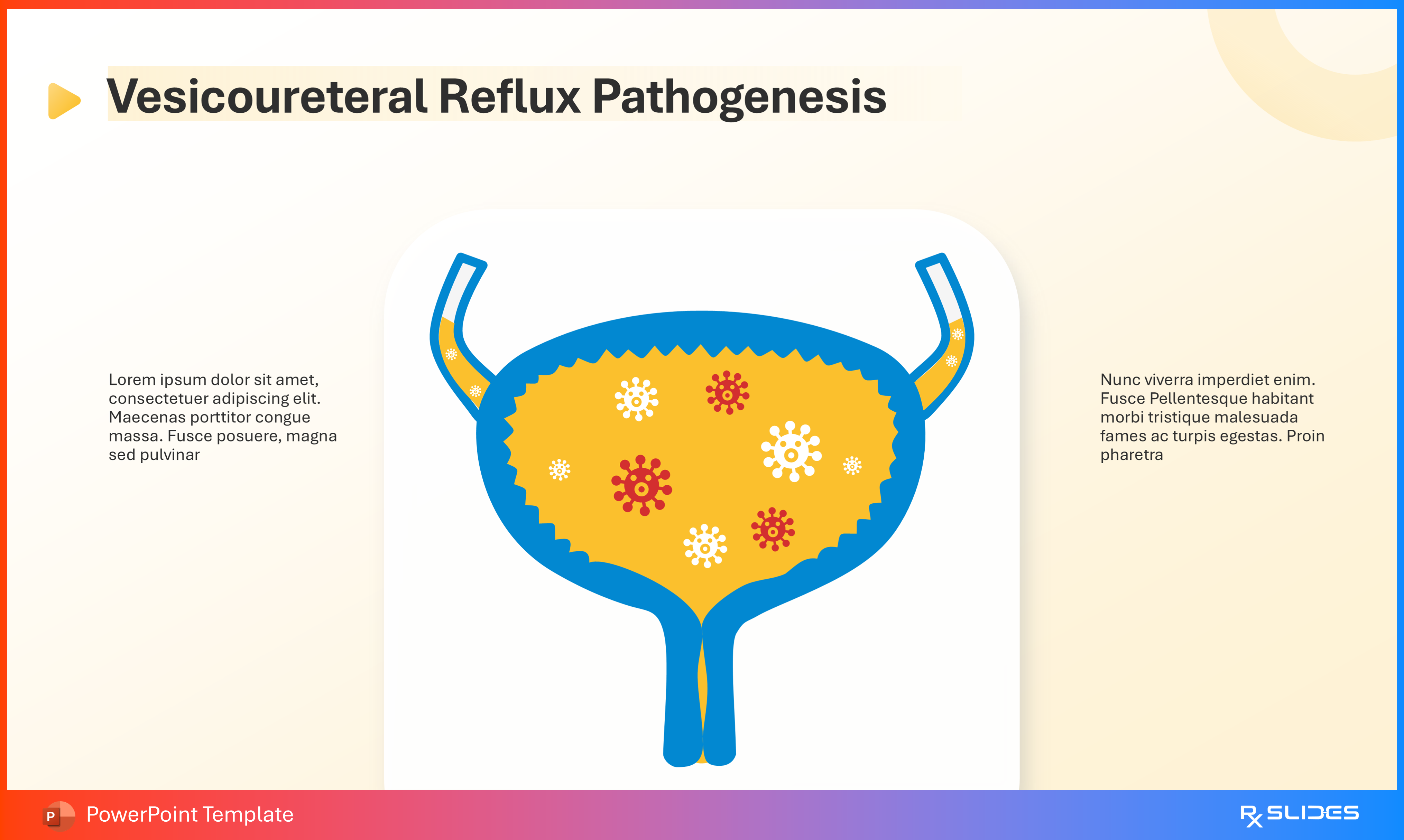
- Second perspective highlighting retrograde urine flow and infection spread.
Slide 28: Urinary Tract Infection Classifications – Section Divider

- Transition to classification of UTIs.
Slide 39: Classifications Overview
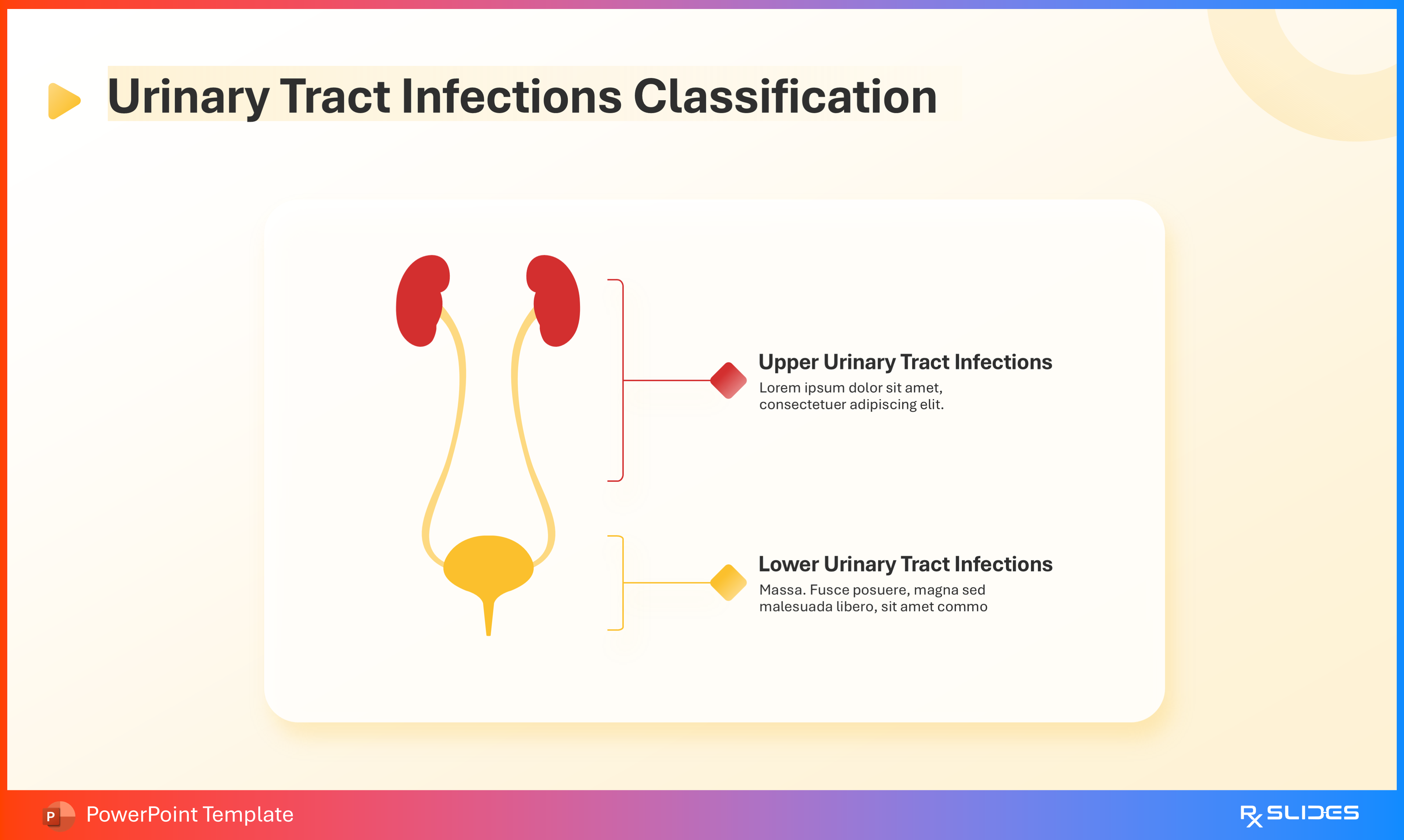
- Main UTI types overview: urethritis, cystitis, and pyelonephritis.
Slide 30: Types of Urinary Tract Infection – Section Divider

- Signals detailed breakdown of UTI types.
Slide 31: Types Overview for UTI
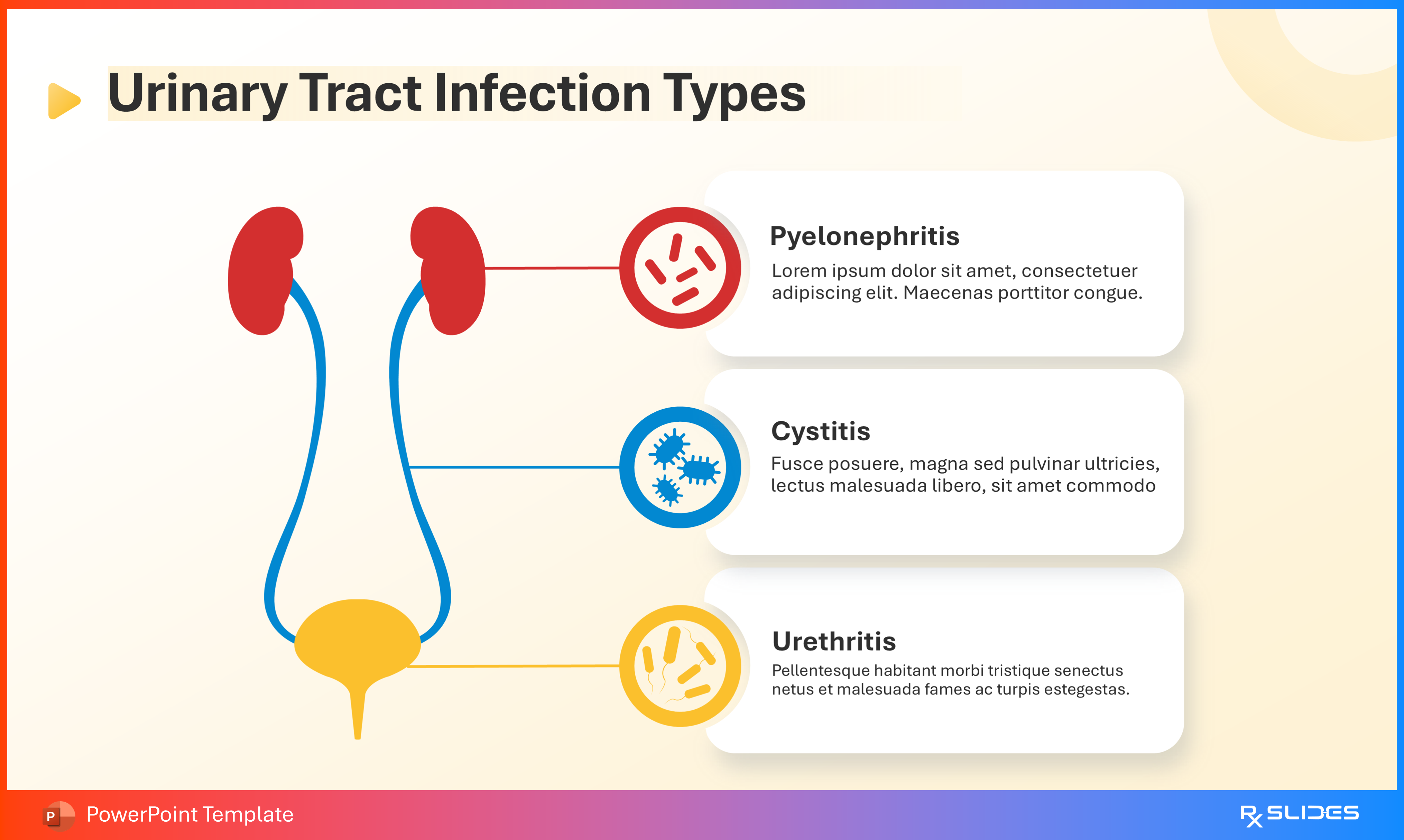
- Differentiates upper and lower UTIs clearly.
Slide 32: Urinary Tract Infection Symptoms – Section Divider

- Introduces clinical manifestations.
Slide 33: Kidney Infection Symptoms
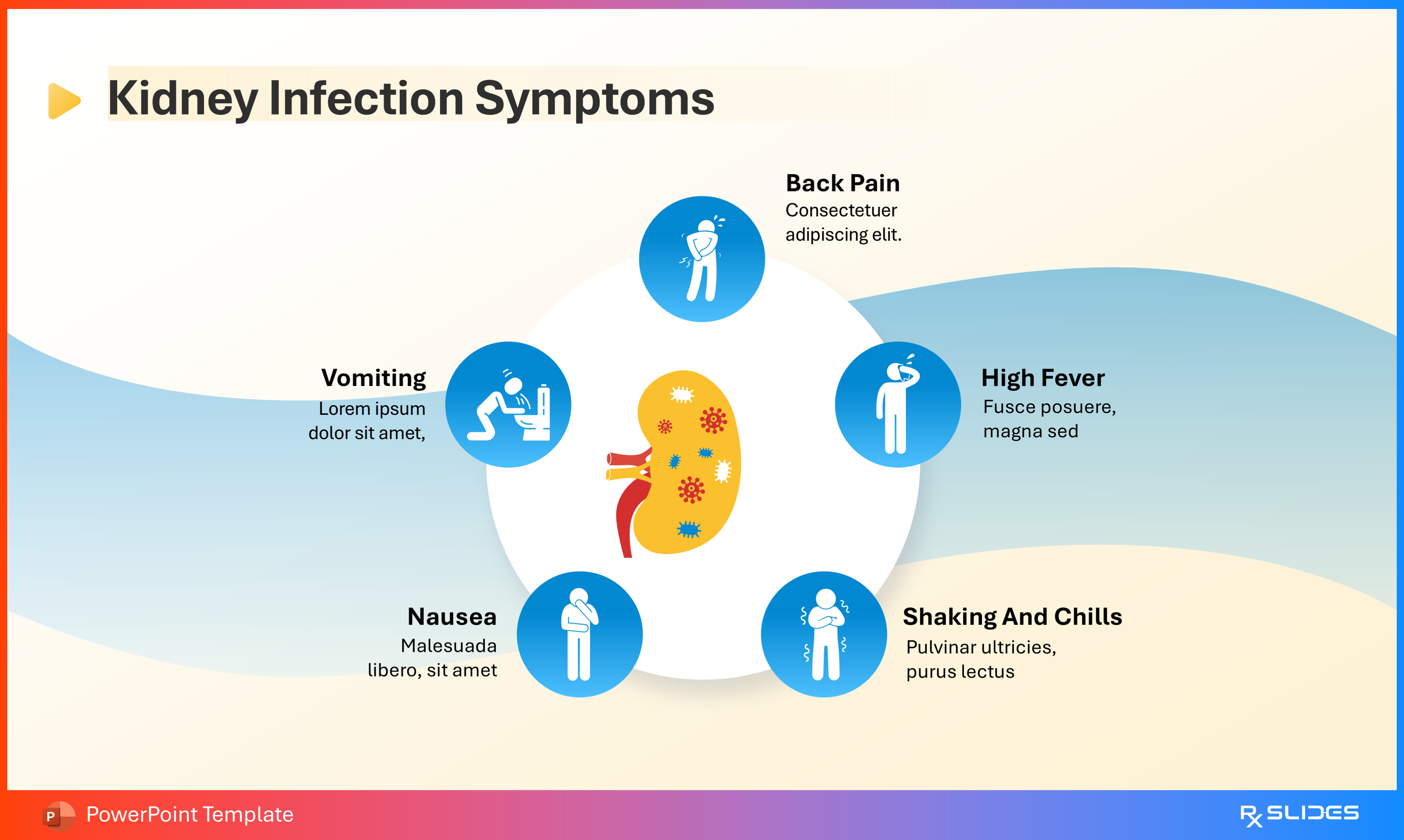
- Upper UTI symptoms: fever, flank pain, nausea, malaise.
Slide 34: Bladder Infection Symptoms
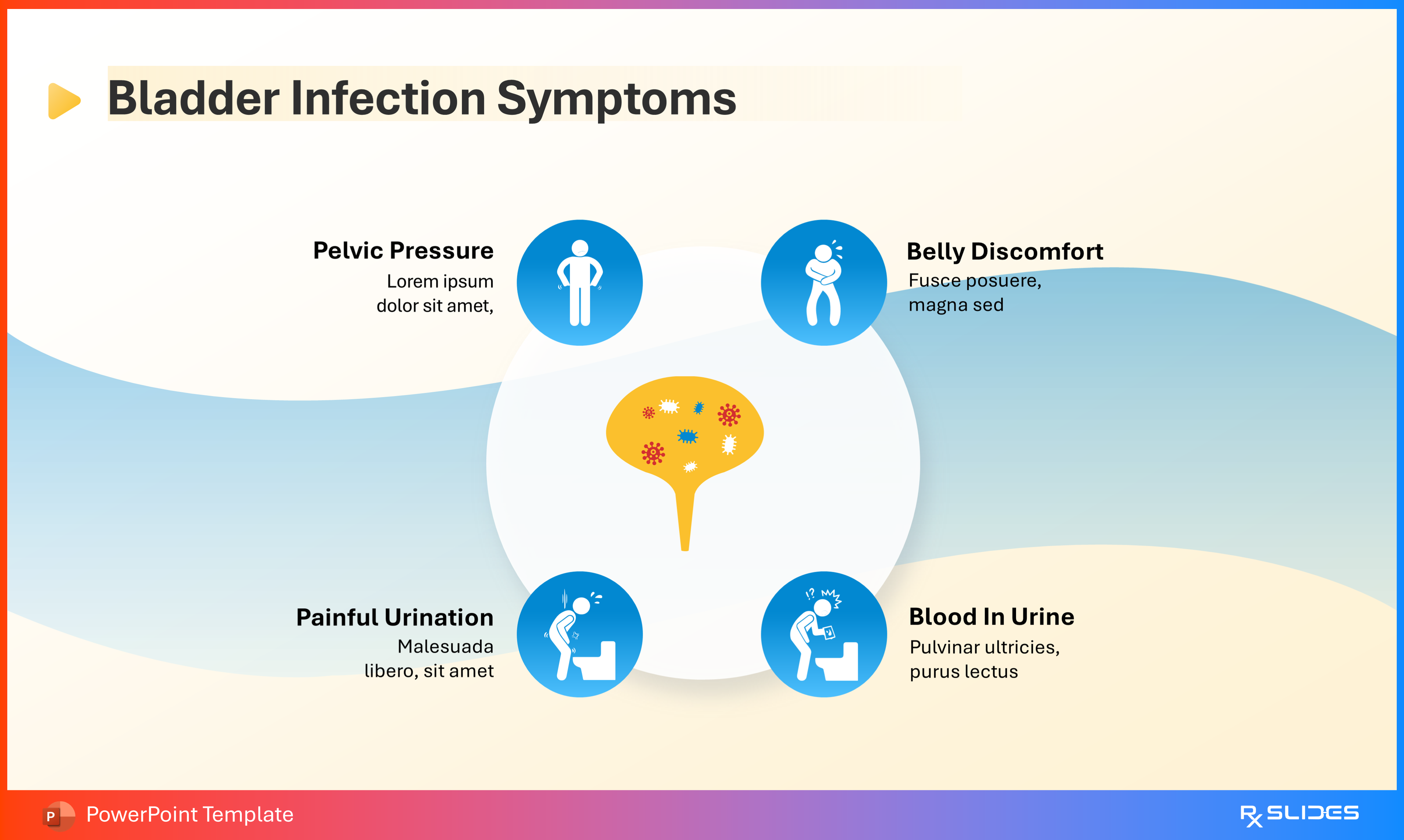
- Lower UTI symptoms: burning urination, urgency, frequency, and suprapubic discomfort.
Slide 35: Urethral Infection Symptoms
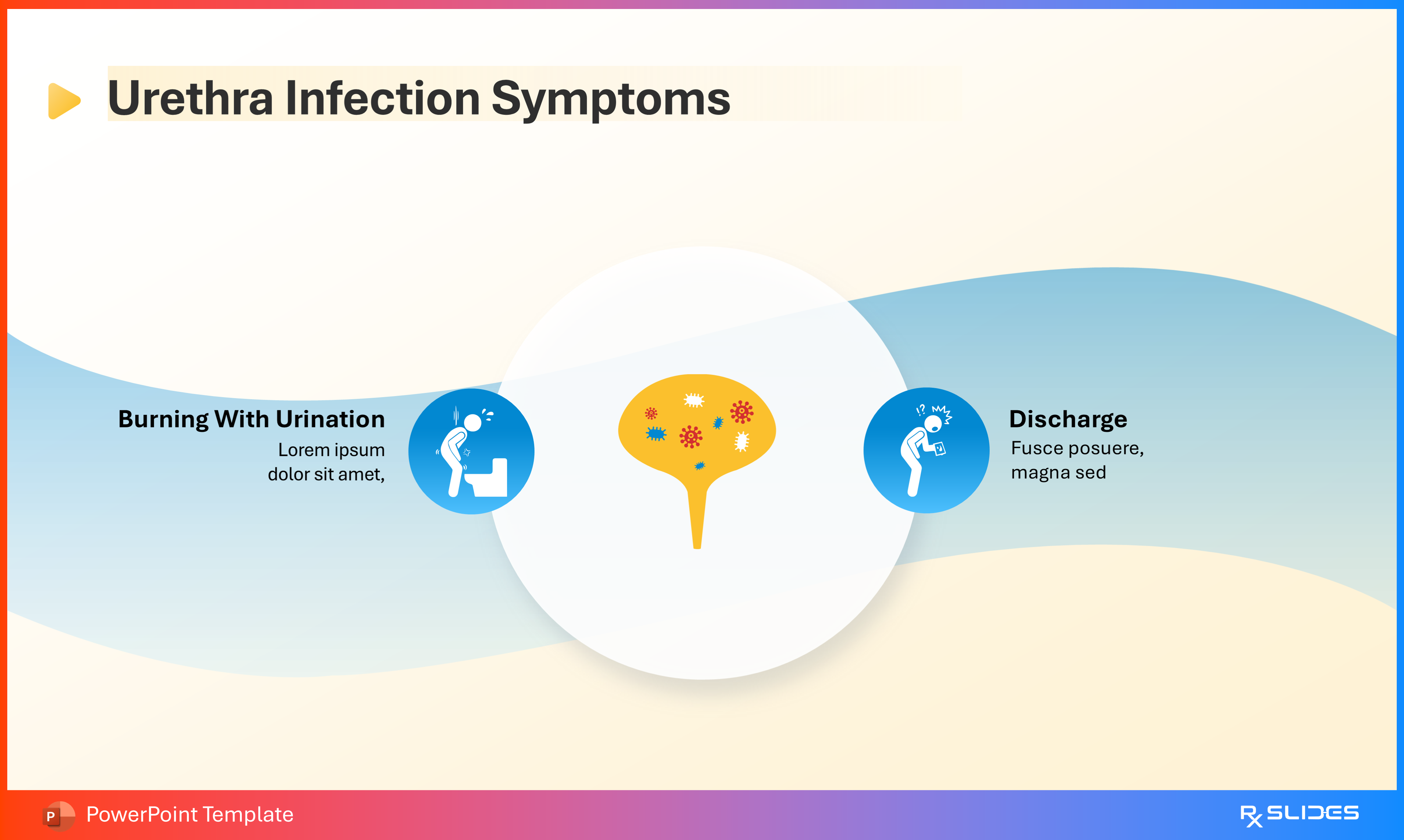
- Urethritis symptoms: painful urination, irritation, and discharge.
Slide 36: Kidney Infection Symptoms – Alternate Layout
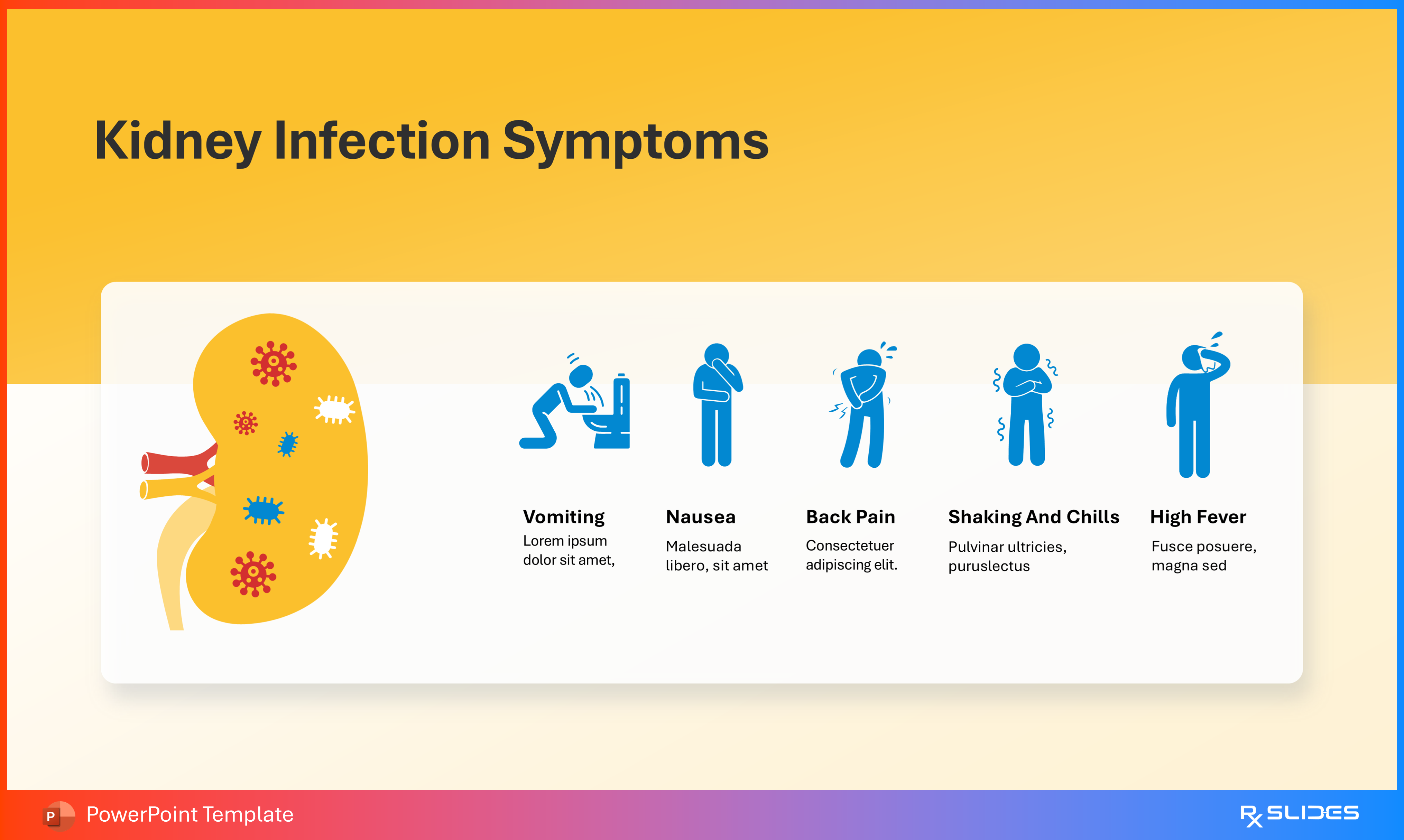
- Flexible presentation of upper UTI signs.
Slide 37: Bladder Infection Symptoms – Alternate Layout

- Alternate presentation for cystitis symptoms.
Slide 38: Urethral Infection Symptoms – Alternate Layout
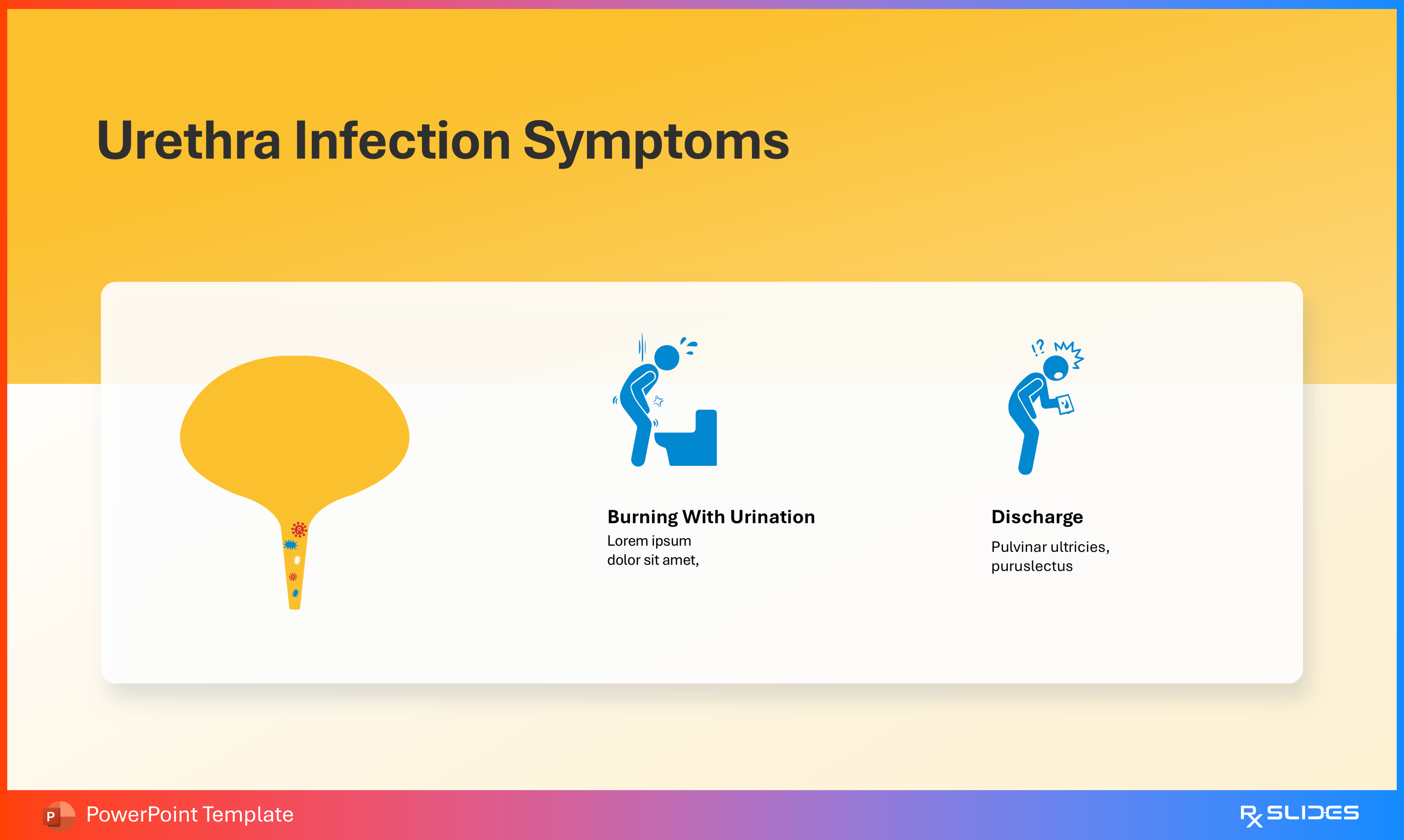
- Second design for urethritis clinical signs.
Slide 39: Urinary Tract Infection Diagnosis – Section Divider

- Shifts to diagnostic methods.
Slide 40: Urinary Tract Infection Diagnosis
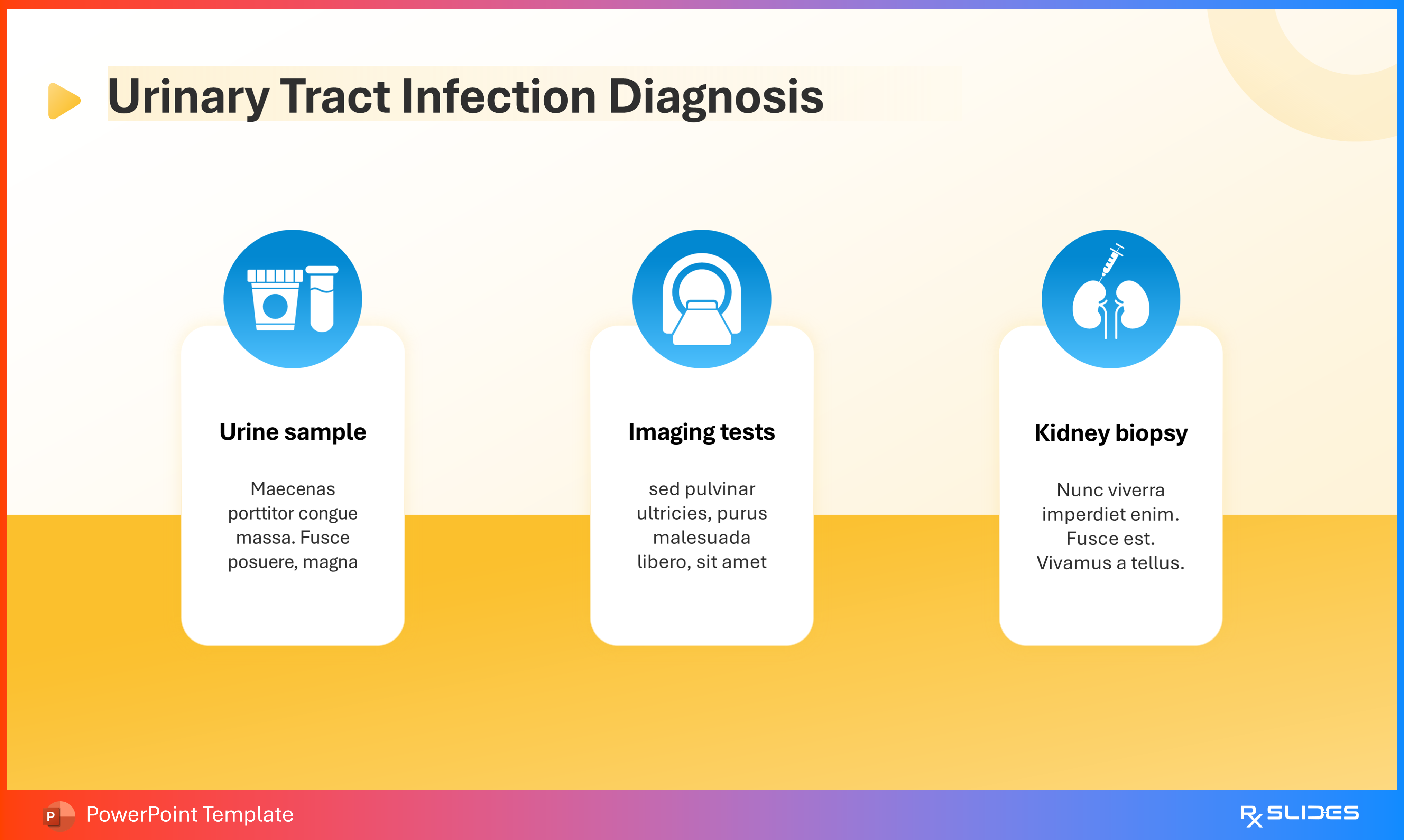
- Steps include urine analysis, culture testing, and clinical evaluation.
Slide 41: Urinary Tract Infection Diagnosis – Alternate Layout
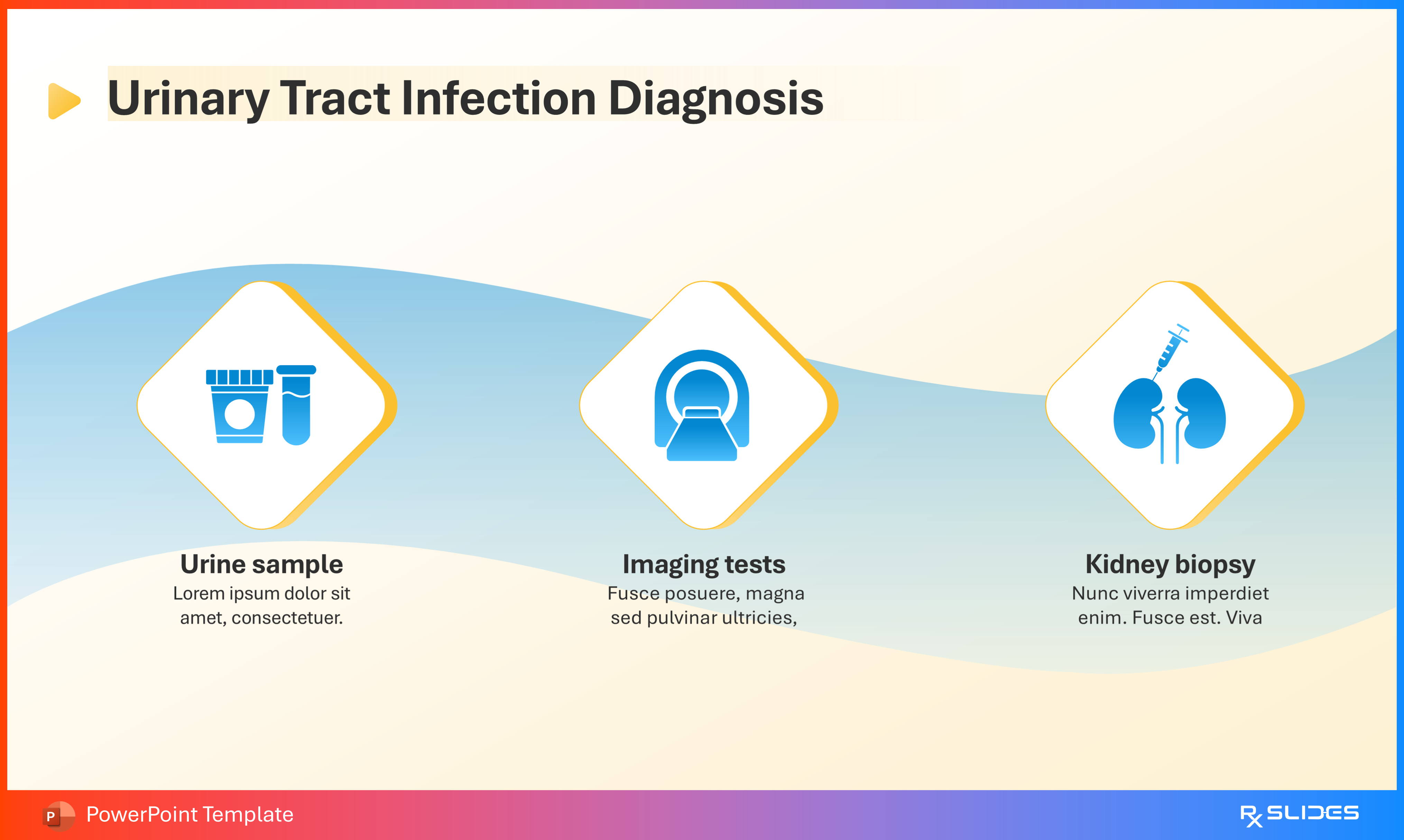
- Provides design flexibility for diagnostic content.
Slide 42: Urinary Tract Infection Treatment – Section Divider

- Introduces management strategies.
Slide 43: Urinary Tract Infection Treatment
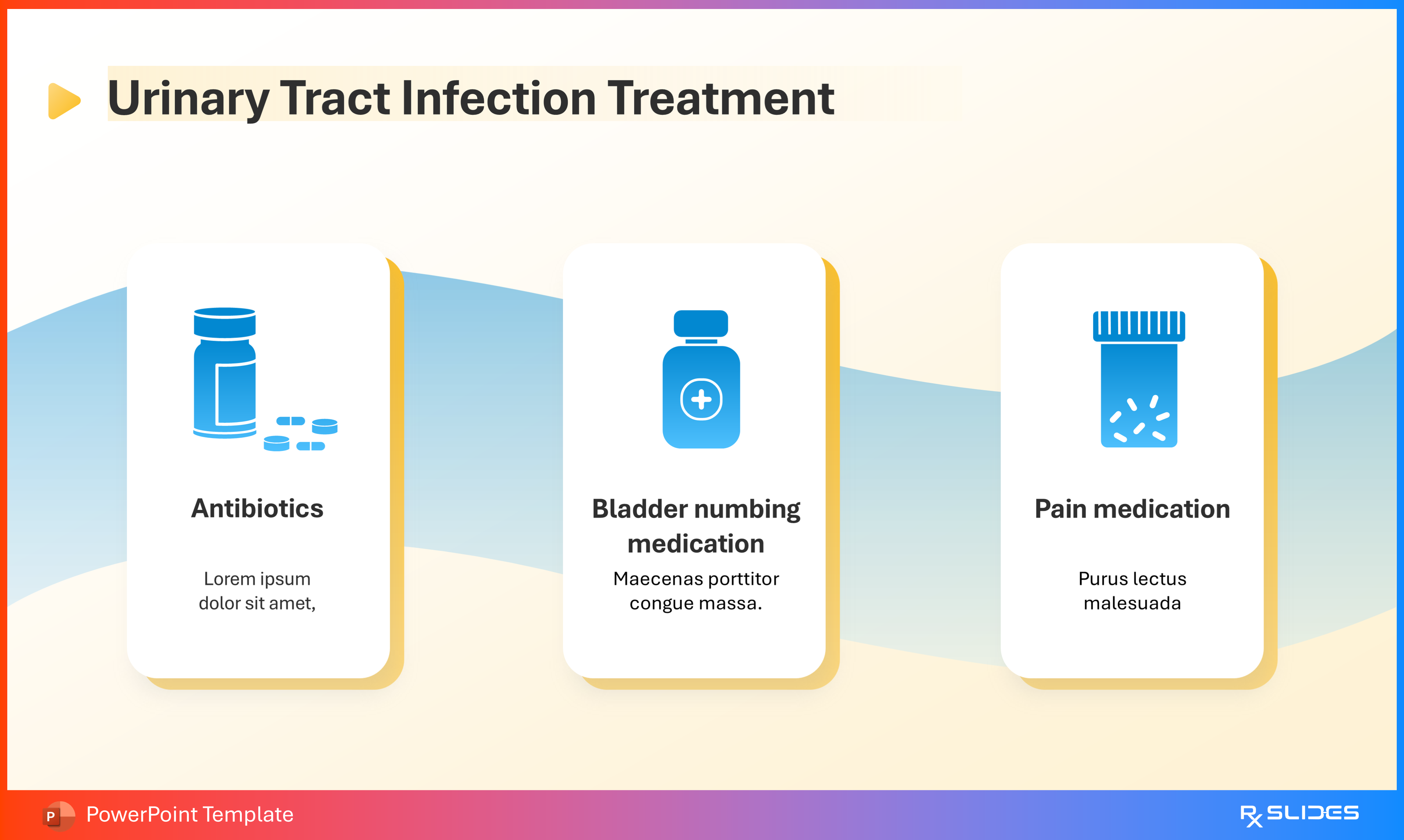
- Summarizes antibiotic therapy, bladder-numbing medications, and pain relief options.
Slide 44: Therapy Options Summary
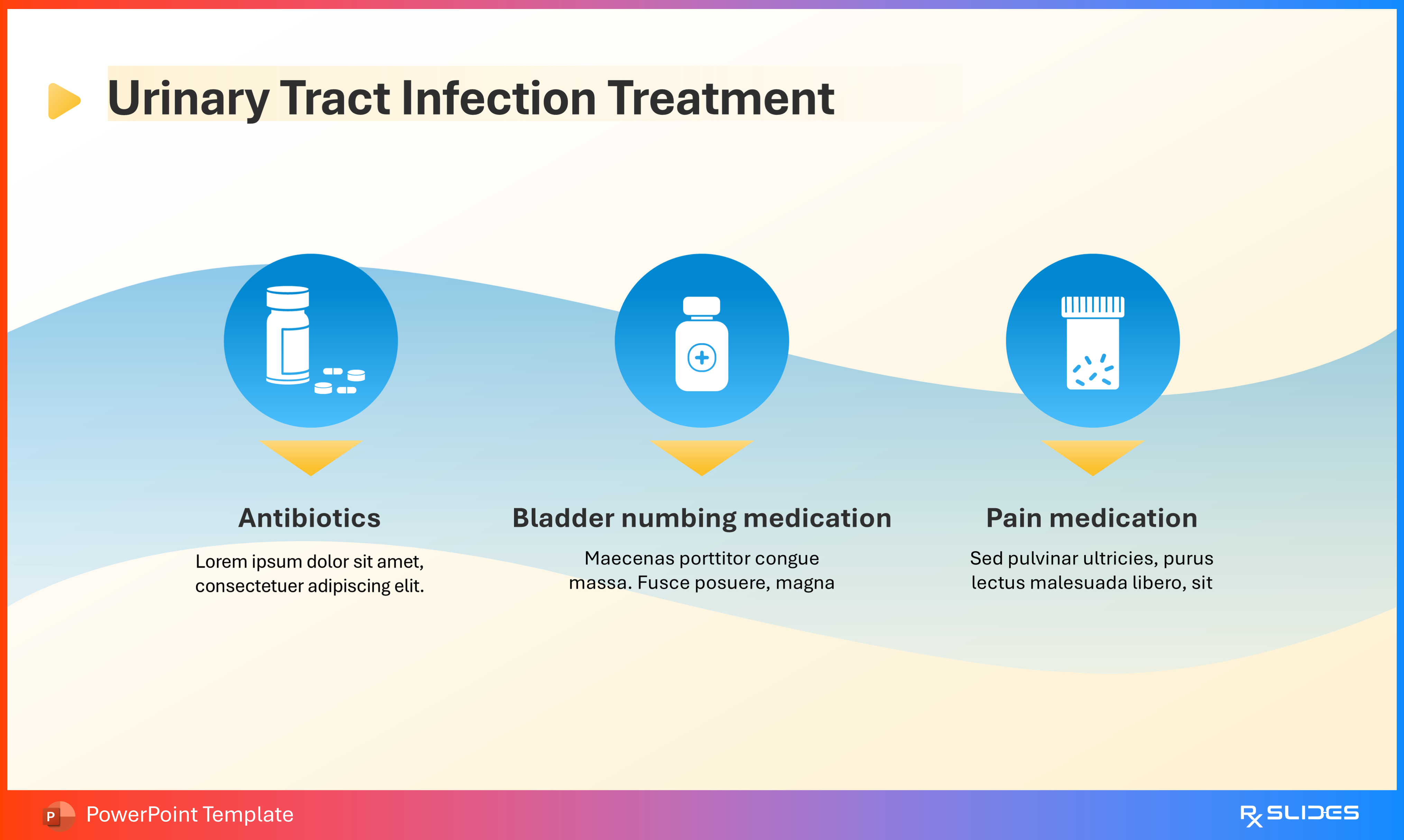
- Alternate layout to reinforce treatment content.
Slide 45: Urinary Tract Infection Prevention – Section Divider

- Introduces preventive strategies.
Slide 46: Urinary Tract Infection Prevention

- Highlights proper hygiene, hydration, and post-sex urination.
Slide 47: Urinary Tract Infection Prevention – Alternate Layout
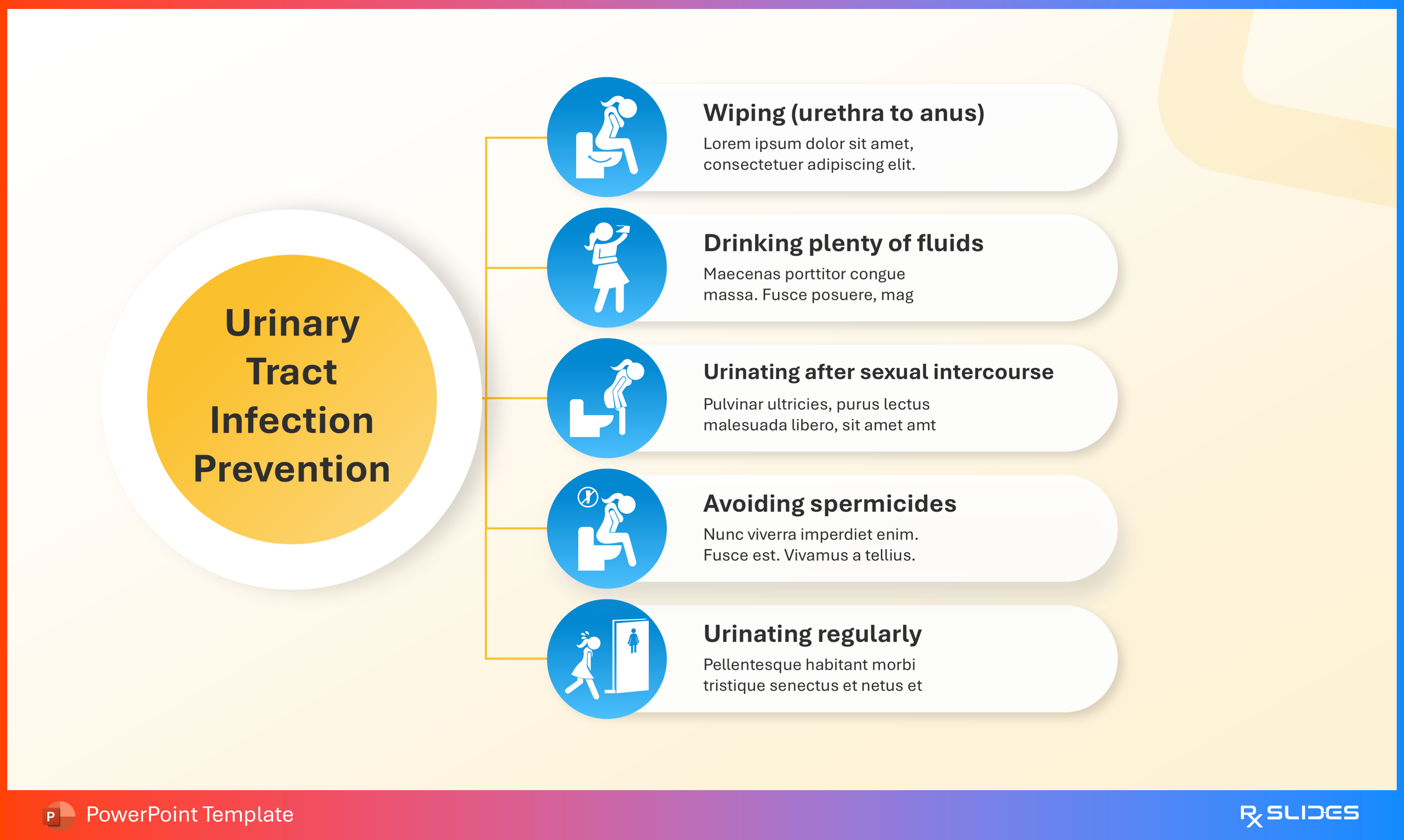
- Flexible design for prevention measures.
Slide 48: Thank You Slide

- Professional closing slide with space for speaker name, institution, or contact details.
Features of the Template
- 100% editable PowerPoint template.
- Editable colors, you can change according to your presentation style and company branding guidelines.

